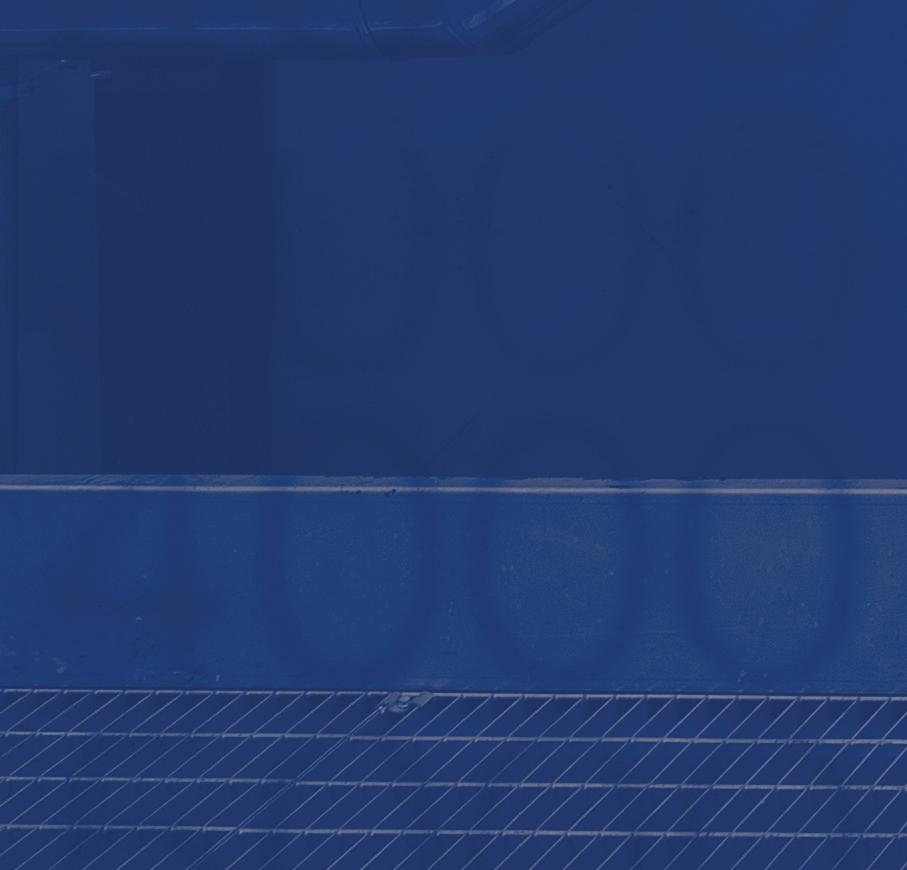




































































































































































































































































Soyabeans
China
20 Biodiesel vs renewable diesel
What are the pros and cons of biodiesel versus renewable diesel and the specific advantages of soyabean oil as a feedstock?
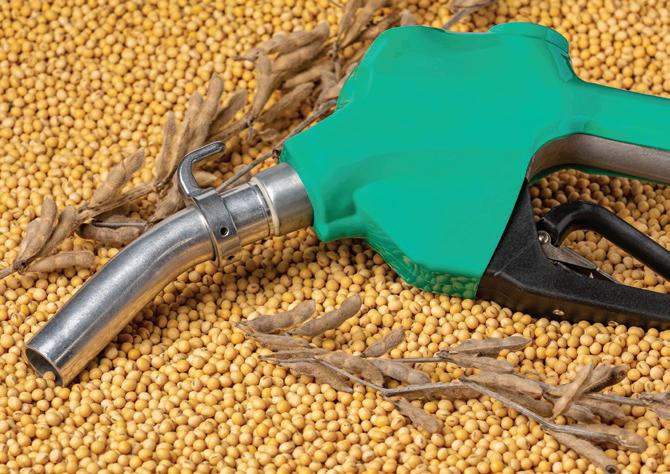

Oleochemicals
27 Boosting soya sector
With the inflationary impact of the Russia-Ukraine war and growing tensions with western trading partners, China has been pushing to boost soyabean output and increase food security

Plant & Technology
30 Latest news round-up
OFI reports on some of the latest projects, technology and process news and developments around the world
South America
32 President under pressure
Brazil’s new president faces pressure to make changes to the country’s biodiesel sector
24 India: leader in castor
Although India is a leading producer and exporter of castor oil, it is failing to capitalise on this position by producing value-added derivatives
Comment
2 One year on Ukraine/Russia News
4 Export corridor renewed for at least 60 days
News
6 Indonesian palm oil tycoon gets 15-year prison sentence
Biofuel News
10 Brazil raises biodiesel blend mandate to B12
Renewable News
12 Anti-dumping duties on Indonesian fatty acids

Transport News
14 Ukraine barge shortage for shallow water ports
Biotech News
15 Pakistan ban on GE imports results in fall in soya trade International Market Review

16 Will supply meet demand?
Diary of Events
35 International events listing Statistics
36 World statistical data
OILS & FATS INTERNATIONALEDITORIAL:
Editor: Serena Lim serenalim@quartzltd.com
+44 (0)1737 855066
Assistant Editor: Gill Langham gilllangham@quartzltd.com
+44 (0)1737 855157
SALES:
Sales Manager: Mark Winthrop-Wallace markww@quartzltd.com

+44 (0)1737 855114
Sales Consultant: Anita Revis anitarevis@quartzltd.com
+44 (0)1737 855068
PRODUCTION:
Production Editor: Carol Baird carolbaird@quartzltd.com
CORPORATE:
Managing Director: Tony Crinion tonycrinion@quartzltd.com
+44 (0)1737 855164
SUBSCRIPTIONS: Jack Homewood subscriptions@quartzltd.com
+44 (0)1737 855028
Subscriptions, Quartz House, 20 Clarendon Road, Redhill, Surrey RH1 1QX, UK
© 2023, Quartz Business Media ISSN 0267-8853
WWW.OFIMAGAZINE.COM
A member of FOSFA
Oils & Fats International (USPS No: 020-747) is published eight times/year by Quartz Business Media Ltd and distributed in the USA by DSW, 75 Aberdeen Road, Emigsville PA 17318-0437. Periodicals postage paid at Emigsville, PA.

POSTMASTER: Send address changes to Oils & Fats c/o PO Box 437, Emigsville, PA 17318-0437
Published by Quartz Business Media Ltd Quartz House, 20 Clarendon Road, Redhill, Surrey RH1 1QX, UK oilsandfats@quartzltd.com
+44 (0)1737 855000
Printed
Just days before the Black Sea Grain Initiative allowing grain and food exports from Ukraine’s Black Sea ports was due to be renewed on 18 March, Russia agreed to an extension, but only for 60 days and not the 120 expected when the initiative was signed last July (see p4).
While some extension is better than none, 60 days does not allow for much forward planning, nor does it address the delays in vessel inspections in Istanbul, which Ukraine blames on Russia. The inspection rate has fallen to around 2.5 ships/day, with some vessels waiting two to five weeks to be cleared and a backlog of about 100 ships.
For Ukrainian grain and oilseed production, the outlook is also very uncertain.
The country harvested around 57M tonnes of grains and 10M tonnes of sunflowerseed in 2022, a third lower than in 2021, with production expected to fall further this year by more than 30%, according to the head of the Ukrainian Agri Council. This is due to farmers sowing less winter crops, with the upcoming spring sowing campaign expected to be a big challenge.
Ukraine has lost some 3.8M ha of farmland to Russia and a further 3.8M ha cannot be sown due to land mines or proximity to the frontline, World Grain reported Ukrainian Club of Agricultural Business (UCAB) analyst Svitlana Lytvyn as saying. As well as the loss of physical land, farmers face difficulties exporting their crops, expensive logistics, destroyed farms and machinery, labour shortages and massive liquidity problems, which will result in minimal use of fertilisers and crop protection products affecting yields.
Russia, meanwhile, is set to overtake Ukraine as the world’s leading sunflower oil exporter, according to a 3 February Reuters report. Before the war, sunflower oil was Ukraine’s highest grossing agricultural export, valued at US$6.4bn in calendar year 2021.
However, in the 2022/2023 marketing year, the US Department of Agriculture projects that Russia will export 3.7M tonnes of sunflower oil against Ukraine’s 3.65M tonnes which, for Ukraine, is 45% down from the previous year. This gives Russia a 35% market share compared with Ukraine’s 34%. Three years ago, the shares were 28% and 50% respectively. Ukraine is expected to export some 2.45M tonnes of sunflowerseed – 20 times its pre-war volumes – but this is due to the closure of its crushing and processing facilities. Russia’s sunflowerseed crop, meanwhile, is forecast at a record 16.5M tonnes.
Russia has made extending the Black Sea export corridor dependent on the removal of Western restrictions which it says are hampering its food and fertiliser exports. Its sea trade across containers, tankers, dry bulk and gas has also continued despite a multitude of EU sanctions, with cargoes either taking a longer route or loading on a ‘shadow fleet’ of vessels operating outside Western insurance and financial systems, according to a 24 February report by Freight Waves
With Russian trade continuing despite sanctions, reports of a possible new Russian offensive, and Ukraine’s farmers facing a host of challenges, the country is still facing a bleak time, despite the resilence of its citizens and industry. One year on from Russia’s invasion on 24 February, we need to be reminded that some 14M people have been displaced; 18M are in need of humanitarian assistance; and more than 100,000 civilians are believed to have been killed – more than 10 times the current official death toll –according to Ukraine’s leading war crimes prosecutor.
Serena Lim, serenalim@quartzltd.com








































ARGENTINA/RUSSIA : The United States Department of Agriculture (USDA) has lowered its sunflowerseed production forecasts in the 2022/23 marketing year (MY) for Argentina and Russia, UkrAgroConsult wrote on 10 February.
The USDA sunflowerseed production forecast for the 2022/23 MY was 50.77M globally; 4.4M tonnes for Argentina; 16M tonnes for Russia and 10.4M tonnes for Ukraine. Projected sunflowerseed exports were 200,000 tonnes for Argentina and 2.65M tonnes for Ukraine. The import forecast for the EU was 2.9M tonnes.
RUSSIA: German chemical giant Bayer has said it would continue to supply agricultural products to Russia and was hoping for a swift resolution to what it called a technical delay in the country’s sunflowerseed imports, Reuters reported on 8 February.
“As announced last year, Bayer continues to supply key agricultural products and solutions for farmers in Russia,” Bayer told Reuters “There are temporary delays in sunflowerseed imports. We are hoping for an early resolution and for the timely import of seeds for the upcoming sowing campaign.”
The company’s statement followed a report in the Izvestia newspaper on 7 February, saying Western seed producers had suspended sunflowerseed shipments to Russia and paused customers’ bids for purchases. The report cited letters by Bayer, Swiss agrochemicals group Syngenta and seed firm Nuseed. Russia’s agriculture ministry said it did not see any risks for the 2023 sowing campaign and had already stocked up on what it needed, even if Western suppliers stopped shipments, Izvestia wrote.
The Black Sea Grain Initiative (BSGI) allowing food exports from Ukraine’s deep sea ports was extended on 18 March, the day it was due to expire, the United Nations (UN) said on the same day.
However, the UN did not specify for how long the deal – which had been operating on a 120-day cycle – had been extended for.
Russia had indicated a few days beforehand that it would only agree to a 60-day extension, with any further extension beyond mid-May dependant on the removal of some Western restrictions.
The BSGI was brokered by the UN and Turkey in July last year and renewed for 120 days in November to allow “facilitation of the safe navigation for the exports of grain and related foodstuffs and fertilisers –including ammonia – from designated Ukrainian seaports [Odessa, Chornomorsk and Pivdennyi]”, the UN said.
The aim was to combat a global food crisis that was fuelled in part by Russia's 24 February invasion of Ukraine and its subsequent Black Sea
ports blockade, Reuters wrote on 18 March.
The two countries are key global suppliers of grains and oilseeds, with Russia also a top exporter of fertiliser.

To persuade Russia to approve the BSGI, the UN had struck a three-year deal in July to help Russia with its food and fertiliser exports, Reuters said.
While food and fertiliser are not among the products Western powers have imposed sanctions on, Moscow said restrictions on payments, logistics and insurance industries were a barrier.
In a 16 March letter to UN
officials and posted on Twitter on 18 March, Russia's UN ambassador Vassily Nebenzia said restrictions needed to be lifted on insurance and access to ports for Russian ships and cargo. A pipeline that delivered Russian ammonia to a Ukrainian Black Sea port needed to be restarted, and the accounts and financial activities of Russian fertiliser companies should be unblocked. He also said the Russian Agricultural Bank should be allowed to return to the SWIFT banking system and the supply of agricultural machinery and spare parts to Russia should be allowed.
The Ukrainian grain traders’ union (UGA) has asked its government to provide transparent rules on the protocol for cargo ships waiting to load at its deep ports under the Black Sea Grain Initiative brokered by the United Nations and Turkey, Reuters reported on 1 March.
Ukraine has accused Russia of delaying inspections of ships in Istanbul carrying Ukrainian agricultural goods.
The UGA has proposed changing the ship queuing system so that it is organised on a monthly basis by stevedores or terminals rather than by vessels, according to the Reuters report.
In addition, the union said terminals should provide the Ukrainian seaport authority every two weeks with a detailed plan of ships movements for passing on to the Joint Coordination Center in Turkey, which was responsible for overseeing implementation of the initiative.
UGA had also proposed allocating a ship quota for each operator, making it public in advance and prohibiting any changes to the established queue in terms of quota distribution to terminals, the report said.
Ukraine’s grain exports for the 2022/23 season were down 26% to 32.3M tonnes to date, due to a smaller harvest and logistical difficulties caused by the Russian invasion, according to the agriculture ministry.
The country's 2022 grains and oilseeds was 67M tonnes – 30% lower compared to the previous year – but this year’s harvest could be even lower and fall 60% compared to 2021, according to the Ukrainian Agri Council, which estimated that farmers had sowed 43% less hectares of winter crops compared with the previous year. The spring sowing campaign was also expected to be a big challenge, it said.



Bring new products to market faster and more sustainably with Crown. As a leader in oilseed extraction for 70 years, Crown’s technical expertise, guidance, proven technologies and Global Innovation Center transform your ideas for protein concentrates, food/beverage, botanicals and other new product segments into pro table realities. With Crown’s full-scale, state-of-the art pilot plant, analytical lab and training facilities, you can test product and process feasibility, run benchtop scale to custom processing and commercialize with ef cient, continuous operations backed by Crown’s aftermarket support and eld services. Accelerate your market opportunity — partner with Crown for a full lifecycle solution. Start up, scale up and expand with CPM and Crown’s expertise.


INDIA: India’s import duty on crude sunflower oil will increase from zero to 5.5% from 1 April, Fastmarkets reported on 1 March.
The import duty increase was applicable on up to 2M tonnes of crude sunflower oil under the tariff rate quota (TRQ) allowance for the 2023/24 season, the report said. The TRQ is a volume of imports that can enter India at a specified or zero duty.
A similar decision was taken in January on crude soyabean oil, which also had a duty-free import quota of 2M tonnes for 2022/23 and 2023/24, Latestly news agency wrote on 1 March.
India was forecast to import 2.55M tonnes of sunflower oil from November 2022 to October 2023, up 33%, with total imports set to rise 6.4% to reach 15M tonnes, Fastmarkets said.
GERMANY: German chemical, fertiliser, crop protection and seed producer BASF will cut 2,600 jobs or about 2.3% of its global workforce as it battles high production costs, Reuters reported on 24 February.
The job losses are part of plans to cut annual non-production costs in Europe by €500M and annual fixed production costs by €200M.
“At the heart of BASF's soaring costs are European natural gas prices which rocketed last year after Moscow's invasion of Ukraine,” Reuters wrote.
Several production lines would be closed at BASF’s largest chemical complex at Ludwigshafen, including one of two plants producing ammonia, used to make nitrate fertilisers.
BASF also produces surfactants for personal care, cosmetics, cleaning and technical applications, including palm- and palm kernel oil-based fractions, oleochemical derivatives and vegetable oil esters.
One of Indonesia’s biggest palm oil tycoons has been sentenced to 15 years in prison and ordered to pay US$2.6bn for bribing officials to allow him to convert more than 36,420ha of forest in Sumatra into oil palm estates, Aljazeera reported on 24 February.
Prosecutors accused Surya Darmadi of bribing officials in Riau Province to benefit subsidiaries of his company, PT Duta Palma. They claimed Darmadi had inflicted state losses of IDR 73tr (US$4.8bn) through his corruption – making him the perpetrator of the biggest corruption scheme in Indonesia’s history. Darmadi was also accused of money laundering and tax evasion from 2002 onwards, Aljazeera wrote.
Finding Darmadi guilty of corruption and money laundering, Judge Fahzal Hendri ordered the tycoon to repay IDR 2.2tr (US$144M) he previously owed the government and a further IDR 39tr (US$2.5bn) in state losses. However, the judge cited Darmadi’s age and ongoing heart problems as reasons not to hand the 71-year-old a life term as requested, the report said.
Darmadi’s sentencing was a watershed as palm
oil companies typically escaped legal action due to widespread corruption that had allowed them to bribe officials, Aljazeera quoted the director of Paradigma, a Sumatran NGO, as saying.
“Darmadi’s case is exceptional because we rarely see those in the palm oil industry held to account,” Riko Kurniawan said.
Indonesia is the world’s largest producer and exporter of palm oil, shipping more than 30M tonnes of palm oil products in 2022. In a 2021 report, Greenpeace Indonesia said oil palm plantations had been the “largest single cause of deforestation in Indonesia over the last two decades”. In 2018, Forbes listed Darmadi’s net worth at IDR 20tr (US$1.3bn), Aljazeera wrote.
Darmadi was accused by Indonesia’s Corruption Eradication Commission in 2014 of bribing the former governor of Riau Province to amend forestry regulations. In 2022, he was accused of making payments to the former head of Indragiri Hulu District in Riau, who issued operating permits for five of PT Duta Palma’s subsidiaries. Darmadi fled Indonesia in 2014 but returned of his own accord last year, resulting in his arrest.
with a methodology that distinguishes areas that can be developed from those that should be protected due to their high conservation value.
Grant Rosoman, senior campaign advisor for Greenpeace, which co-chairs HCSA, said that companies leaving voluntary initiatives such as the HCSA invited regulatory approaches to control tropical forest loss, such as the EU’s recent deforestation law.
Leading palm oil companies Golden Agri-Resources (GAR) and IOI Group have withdrawn from the High Carbon Stock Approach (HCSA), a voluntary framework set up to help firms meet their no-deforestation pledges, Eco Business reported on 27 February.
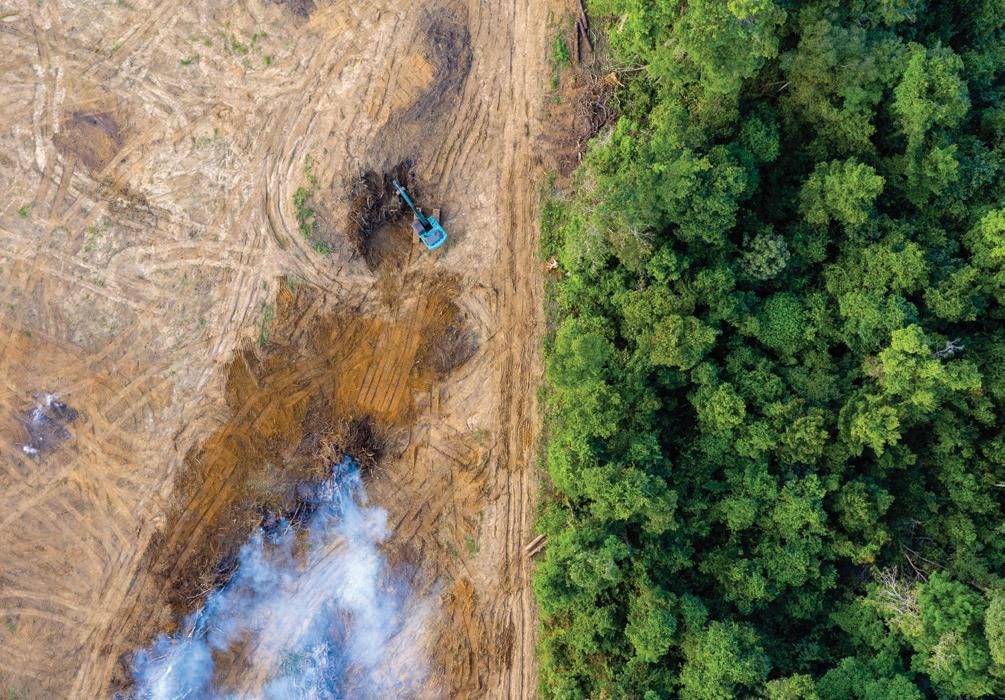
The withdrawal of GAR –which is owned by Indonesian conglomerate Sinar Mas – and its Malaysian competitor IOI Group, brings the total number
of palm oil firms quitting the HCSA to four in three years, according to the report.
Wilmar International and Sime Darby Plantation quit the framework in 2020, the former citing governance issues and the latter saying the decision was due to COVID 19-induced budget constraints, the report said.
HCSA was set up in 2014 to provide companies in the palm oil and pulp and paper sectors
GAR was quoted as saying that it had seen a “shifting focus” from HCSA in enforcing its guidance in recent years, and an “unnecessary” overlapping role between HCSA and the Roundtable on Sustainable Palm Oil (RSPO).
Despite its resignation from the body, GAR said it was committed to its zero-deforestation policy and would abide by the HCSA’s toolkit.
IOI had not responded to queries about why it left the HCSA, Eco Business wrote.
Global agribusiness giant Bunge has achieved 80% traceability of soyabeans in its indirect supply chain in the Cerrado region of Brazil, the company announced.
Part of Bunge’s Sustainable Partnership Program, which was launched in 2021, the initiative tracks indirect purchases in the region to help grain re-sellers assess suppliers’ social-environmental performance.
As part of the programme, Bunge shares its methodologies and tools to enable grain re-sellers to market commodities of proven sustainable origin. This includes access to
verification systems, such as satellite and farm-scale images.

“The programme … remains an important instrument in helping the company achieve its goal of deforestation-free chains in 2025,” Pamela Moreira, Bunge’s sustainability senior manager for South America, said on 7 February.
“Since 2018, Bunge has been able to fully trace back to third-party elevators, so the next step was to expand our focus to soyabeans acquired through our indirect supply chain in the Brazilian Cerrado.”
The firm said it was also enhancing its partnership with agtech company Vega Monitoramento, which uses the LYRA platform for remote sensing, artificial intelligence and structured data to diagnose agricultural's socio-environmental properties. ● Bunge reported a 14% sales increase for 2022 on 9 February but said it expected challenges ahead in its three main business units, including its core agribusiness segment. Adjusted net income for 2022 was US$1.6bn, against US$2.078bn the previous year.


Malaysian palm oil company Sime Darby Plantation is no longer using forced labour, paving the way for the USA to restart imports from the firm, Bloomberg reported US Customs as saying.
Palm oil and related products linked to Sime Darby had been banned from entering the USA since January 2022 following claims of forced labour, Bloomberg wrote on 2 February.
Since then, the company had provided additional information to US Customs and Border Protection (CBP), which said on 2 February that it had satisfactory evidence to believe the products were “no longer mined, produced or manufactured in any part with forced labour”.

Sime Darby said the following day that the USA could resume imports from the firm with immediate effect. It had pledged to ensure the well-being of workers and had submitted a report in April to show that its operations were in “full compliance” with US import regulations and international labour standards, Bloomberg wrote.
“It took us more than 500,000 hours to undertake our reviews and revise what we had in place,” group managing director Mohamad Helmy Othman Basha said.
The Malaysian government had also formed a working committee with the CBP to address the issue, the report said.
WORLD: The World Health Organisation (WHO) has called for the total elimination of industrial trans fatty acids (TFAs), saying it is responsible for half a million premature deaths each year, VOA News reported on 23 January.
According to WHO data, 5bn people were being exposed to industrial TFAs, which are commonly found in packaged foods, baked goods, cooking oils and spreads, increasing their risk of heart disease and death.
TFAs occur naturally in animal fats but the health concerns relate to industrial trans fats formed by the partial hydrogenation of vegetable oils to increase their stability and shelf life.
Eliminating industrial trans fat from food could prevent up to 17M deaths from cardiovascular diseases globally by 2040, according to Tom Frieden, CEO of the public health initiative Resolve to Save Lives.
Frieden also spoke of the importance of distinguishing artificial trans fat from saturated fat, which he called “an inherent part of many food groups in which nobody is proposing to ban”.
VOA News wrote that progress had been made, with 43 countries having implemented best practice policies for tackling trans fat in food. However, Frieden said that still left 5bn people at risk from the health impacts of trans fat.
The Indonesian government suspended twothirds of palm oil exports in a bid to secure domestic cooking oil supplies ahead of Ramadan and Eid, the United States Department of Agriculture (USDA) said in a 13 February report.
In February, the government had set a target of increasing domestic cooking oil supplies by 50% to 450,000 tonnes in the run-up to Ramadan and Eid festivities, leading to a projected 400,000-800,000 tonnes of the country’s palm oil exports expected to be blocked from 6 February-1 May, the Foreign Agricultural Service (FAS) Global Agricultural Information Network (GAIN) report said.
The country’s coordinating minister for Maritime and Investment Affairs (Marves) Luhut Pandjaitan had announced on 6 February that
66% of palm oil export permits already issued to companies which had complied with the government’s Domestic Market Obligation (DMO) policy would be suspended with immediate effect until 1 May 2023. The suspension could be lifted in early May 2023 pending a government review, the report said.
In early January, the government had already tightened restrictions on palm oil exports by reducing its DMO ratio from 1:8 to 1:6, which meant that for every tonne of palm oil sold domestically, firms could only export six tonnes of palm oil instead of eight.
The average price of subsidised cooking oil in Indonesia increased by 7% from US$0.93/litre in December 2022 to US$0.99/litre at the time of the USDA report.
Mediterranean custom, in addition to his morning coffee. He then had the idea of combining the two ingredients.
“In both hot and cold coffee beverages, what it produced was a velvety, buttery flavour that enhanced the coffee and lingers beautifully on the palate,” Schultz said.
The range includes Oleato Latte, Oleato Iced Shaken Espresso and Oleato Golden Foam Cold Brew.
Leading coffee chain Starbucks has launched a line of drinks infused with extra virgin olive oil in Italy.
The new Oleato line of drinks combined arabica coffee infused with Partanna cold-pressed, extra virgin olive
oil, the company said on 21 February.
Starbucks chief executive Howard Schultz said while travelling in Sicily last year, he began taking a spoonful of extra virgin olive oil each day after being introduced to the
Following the new line’s launch in Italy, Starbucks said it would also be introducing it to additional global markets, starting with Southern California, USA. Later this year, the drinks would be launched in Japan, the Middle East and the UK.

New legislation took effect on 1 February in Hong Kong making the manufacturing, supply, sale, import, export, possession and consumption of cannabidiol (CBD) products – including cosmetics and food – illegal.
CBD is one of the chemical compounds found in the cannabis plant but does not have the psychoactive properties of the other common plant compound, tetrahydrocannabinol (THC).
Some studies have found that CBD has
therapeutic benefits but the compound has been categorised as a “dangerous drug” in Hong Kong, with local authorities saying its use could have harmful side effects and around a third of CBD products seized also contained THC, Bloomberg said on 2 March.
Some industry players believed the move had been made to bring Hong Kong closer to drug regulation in mainland China, which banned the use of CBD in all cosmetics in 2021, the news agency added.
Prior to the ban, a growing market had emerged in Hong Kong for products containing CBD, ranging from skincare to food and drinks, Time wrote on 31 January.
These firms could now turn to potential markets such as Japan and South Korea, Hedy He, cosmetic regulatory analyst at ChemLinked, told CosmeticsDesign-Asia.
As of last February, the global market for CBD was forecast to reach US$48bn by 2028, Time wrote.

WORLD: Global biofuel consumption could rise by 20% from 2022-2027, according to a recent forecast by the International Energy Agency (IEA).
Globally, the biofuel share in transport fuel consumption would increase from 4.3% to 5.4% in 20222027, the report said.
Bio-jet fuel is forecast to make up 1-2% of jet fuel globally by 2027, with Europe and the USA meeting most of this demand and additional supplies coming mainly from Singapore.
The USA, China, Europe and India would account for 80% of biofuel consumption growth but they needed to increase supply of feedstocks, especially wastes and residues, to expand renewable diesel, bio-jet fuel and biodiesel production.
“Nearly 70% of renewable diesel and bio-jet fuel came from wastes and residues in 2021,” the report said.
The IEA forecast global biofuel demand in 2022 rising by 6% – or 9.1M litres/year – compared to the previous year.
GERMANY: Germany
exported its largest ever volume of biodiesel in the 2022 marketing year at 2.34M tonnes, the country’s Union for the Promotion of Oil and Protein Plants (UFOP) wrote on 23 February. Imports also hit an alltime high of 1.4M tonnes.
With facilities in Rotterdam, the Netherlands was the most important European hub for biodiesel trade and remained Germany’s largest trading partner, taking 1.156M tonnes of biodiesel in 2022, a 21% increase against 2021. Belgium purchased around 635,900 tonnes of biodiesel from Germany in 2022, a 61% rise year-on-year rise. At 287,200 tonnes, shipments to the USA doubled compared to 2021.
The Brazilian government has announced that the country’s biodiesel blending mandate will be raised from the current 10% level (B10) to 12% (B12) from April, ramping up to 15% (B15) by 2026, AgriCensus reported on 17 March.
The move – announced by the country’s national energy policy committee (CNPE) – was welcomed by the biodiesel sector, AgriCensus wrote.
“This initiative brings juridical predictability for the biodiesel sector to intensify its investments and puts Brazil on the pathway to lead global diesel decarbonisation efforts,” the Brazilian Association of Vegetable Oil Industries (ABIOVE) was quoted as saying in a note immediately after the announcement on 17 March.
Although the increased blending mandate was broadly in line with industry expectations, the announced ramp-up schedule was more cautious than the country’s biodiesel sector had been pushing for, the report said.
ABIOVE – along with Brazil’s biofuels producers’ association (Aprobio), Brazil’s union of
biodiesel and biokerosene (Ubrabio) and the national union of household agriculture and solidarity-based economy (Unicafes) – had told AgriCensus at the end of February that the sector believed B15 could be reached by March 2024.
The announcement would increase domestic demand for biodiesel and upstream products, particularly soyabean oil, which accounts for 70% of the feedstocks used to produce biodiesel in Brazil, according to the report.
Brazil’s biodiesel blending mandate had reached a maximum of B13 and was scheduled to reach B15 in March 2023. However, it was reduced to B10 in 2021 in a government bid to control domestic inflation and had remained at that level since, the report said.
According to estimates ABIOVE shared with AgriCensus earlier this year, the move to B12 would increase Brazil’s soyabean oil demand from the biodiesel sector by about 800,000 tonnes/year. Meanwhile, the country’s food agency Conab has pegged Brazil’s 2022/23 soyabean oil output at 40.4M tonnes.
Eni Sustainable Mobility has formed a 50/50 joint venture with petroleum refiner and supplier PBF Energy to develop a bio-refinery in the USA, which is currently under construction on the site of PBF’s Chalmette refinery in Louisiana.
The St Bernard Renewables (SBR) facility was expected to have a processing capacity of about 1.1M tonnes/year of raw materials, with full pre-treatment capabilities, the companies said on 16 February. It would produce mainly hydrotreated vegetable oil (HVO) (renewable diesel), with a production capacity of 1.15bn litres/year (306M gallons/year).
Eni Sustainable Mobility said it would invest up to US$835M – and a further US$50M subject to project milestones – in the joint venture and provide expertise in bio-refining operations, supply and marketing.
PBF said it would contrib-
ute its industrial knowledge of the USA to the project and would operate the biorefinery, which was scheduled to start production in the first half of this year.
The biorefinery would use the Ecofining process developed by Eni in cooperation with Honeywell UOP, the

companies said.
Eni Sustainable Mobility, which started operation on 1 January, is part of Italian oil and gas company Eni and is involved in operations relating to bio-refining, marketing and distribution of fuels, including HVO and biomethane.
The USA’s increasing use soyabean oil to produce hydrotreated vegetable oil (HVO) threatens Argentine exports of soyabean meal, according to a report by the Rosario Stock Exchange (BCR) reported by Argentine newspaper Clarín on 24 January.


Conversions of petroleum refineries to HVO production using mostly soyabean oil had increased significantly in the USA, leading to an 88% increase in HVO production from January-September 2022, against the same period the previous year.
The BCR report said US HVO consumption was expected to reach 9M tonnes this year and nearly 12M tonnes in 2024.
Argentina was concerned that increased soyabean oil production in the USA to obtain HVO feedstock was accompanied by increased meal production, one of Argentina’s main agro-exports, Clarín wrote.

This extra supply would depress international prices for soyabean pellets.

According to BCR estimates, US soya meal production could increase by more than 11M tonnes in the next five years and its exports by more than 6.4M tonnes.
Thirteen new soyabean processing plants and 10 expansions of existing plants have been announced in the USA, American Soybean Association data shows.
A 2 February US Energy Information Administration (EIA) ‘Today in Energy’ report said the country’s HVO production capacity could more than double by the end of 2025 to 384,000 barrels/day (5.9bn gallons/year).
Eight new HVO refineries started production either in 2022 or earlier this year: CVR Energy’s plant in Oklahoma; Diamond Green Diesel’s plant in Texas; HollyFrontier’s plants in New Mexico and Wyoming; Montana Renewables’ plant in Montana; New Rise Renewables’ plant in Nevada; Seaboard Energy’s plant in Kansas and Shell’s plant in Louisiana.
Finnish oil refining and renewable diesel producer Neste has welcomed the German government’s proposal to approve the sale of 100% synthetic fuels and renewable diesel at fuel stations.
“So far, the sales of synthetic fuels, such as e-fuels and renewable diesel in Germany have been largely limited to fuel blends in which these fuels have repre-

sented about a 26% maximum content,” the company said on 2 March. “The sales of unblended 100% renewable diesel has previously only been allowed in specific segments, such as in non-road vehicles and public transportation.”
The German proposal was set out by Federal Minister of Transport Dr Volker Wissing, who said on 3 March that Ger-
many would not agree to a landmark EU law to end sales of CO2-emitting cars in 2035 unless sales of new cars with internal combustion engines be allowed after that date if they run on e-fuels, according to a 7 March Reuters report. E-fuels are made by synthesising captured CO2 emissions and hydrogen produced using renewable or CO2-free electricity.
On 19 January, the European Commission (EC) imposed anti-dumping duties on fatty acid imported from Indonesia, ranging from 15.2% to 46.4%.
“This follows an investigation which showed that the EU industry was being harmed by dumped imports because it could not compete on price, resulting in a market share loss,” the EC said. “The duties will help to ensure fair competition between fatty acid imported from Indonesia
THAILAND: Leading Asian petrochemicals firm SCGC Chemicals announced plans to jointly develop a plantbased plastics plant with Brazilian petrochemical company Braskem, the Bangkok Post reported on 2 February.
The facility would start bio-ethylene production in 2025 to be used in the manufacture of bio-based polyethylene (PE), a type of plastic used to make a range of products including packaging materials and bottles.
Once operational, the factory in the Map Ta Phut area of Rayong would have a production capacity of 200,000 tonnes/year, SCGC president Tanawong Areeratchakul was quoted as saying.
As bio-based PE plastic was produced from plants, including sugarcane and cassava, the factory would help farmers earn extra revenue, Tanawong said.
and locally-produced fatty acid.”
The duties were imposed following a complaint lodged on 18 October 2021 by the Coalition against Unfair Trade in Fatty Acid. On 30 November that year, the EC launched an anti-dumping investigation on Indonesian fatty acid imports, followed by an anti-subsidy probe on 13 May.
Indonesia’s Musim Mas group and Asian agribusiness Wilmar International had said that imports from Indonesia were overstat-
ed as they included fatty acid imported for biodiesel production and other fatty acids not used in food, cosmetics and personal applications, such as palmitic acids.
However, the EC said fatty acid produced as a by-product of biodiesel production was not included in the investigation and its analysis indicated a decrease in EU production and capacity utilisation and injury to the EU industry from the dumping of fatty acids from Indonesia.
A new study by researchers in China has shown that rhamnolipids can help turn sewage into hydrogen and biodiesel, Chemical & Engineering News (C&EN) reported on 10 February.

Rhamnolipids are surfactants named for their rhamnose sugar groups and fatty acid tails.
Researchers at the Harbin Institute of Technology and the Northeast Agricultural University in Harbin, China, took waste-activated sludge – made from raw sewage treated with oxygen to stabilise its microbe populations – from a treatment plant in Harbin.
After putting the mixture through a sieve to remove large particles, the sludge was heated and – using fermentation – bacteria was left to produce hydrogen. Microalgae was then added to generate lipids for use in biofuel production.
The effects of nine surfactants were also tested on the process, with rhamnolipids creating the best environment for the microalgae and the sludge’s bacteria to generate fuels, C&EN wrote.
The researchers speculated that the rhamnolipids’ hydrophilic and hydrophobic groups reduced the surface tension of the waste-activated
sludge and the macromolecules contained within it, the report said. This could have helped break down the waste’s organic matter, making vital nutrients more accessible for the hydrogen-producing bacteria to digest. In addition, the surfactant helped biodiesel output as the microalgae fed on the fermentation solution produced by the bacteria.
Some 760,000 tonnes of fatty acid capacity will be added this year as a result of recently completed expansion projects, despite overcapacity in the market, according to LMC International market analyst Wen-Yu Chen. The projects include:
• A 250,000 tonnes facility in Batam, Indonesia by Indonesian palm oil corporation Musim Mas.
• A 200,000 tonnes plant in Medan, Indonesia by Indonesian palm oil group Permata Hijau.
• A 370,000 tonnes facility in Jiangsu,
China by Chinese oleochemicals producer Nantong Kangqiao Chemical.
Chen told the 19th Global Oleochem Summit last year that a 250,000 tonnes fatty acid project by Chinese oleochemicals and surfactants producer Zanyu Technology Group had been delayed and was expected to come online in Henan province this year. The construction of a 110,00 tonnes fatty acid plant by Malaysia’s IOI Oleochemical in Prai, Malaysia had also been delayed.
However, Asian vegetable oil processor Apical’s project in China – Peak Oleo – was expected to be completed in the first half of this year, which included a 50,000 tonne soyabean oil splitter. Global consumer goods firm Unilever had also begun construction of a 300,000 tonnes/year fatty acid plant in Sei Mangkei, Indonesia.
Chen said around 11.9M tones of fatty acids and 3M tonnes of fatty alcohol were produced in 2021, which required around 15.6M tonnes of vegetable oil. (For more details, go to: www.lmc.co.uk/oleochemicals)



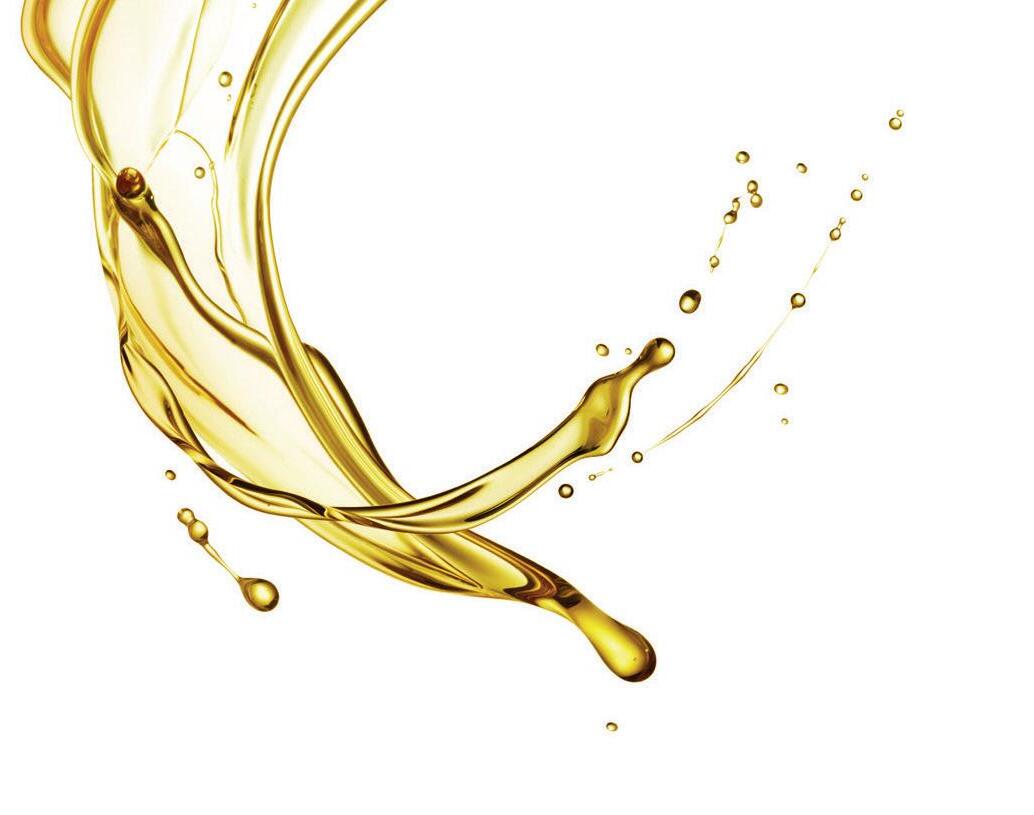


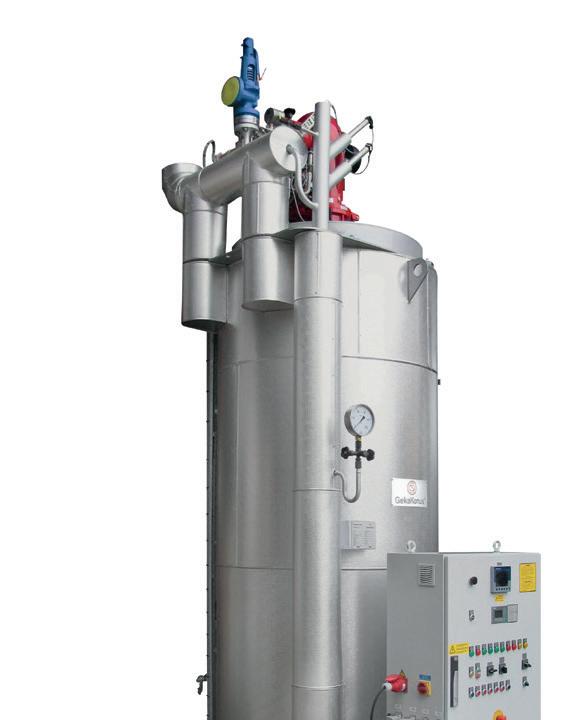
UKRAINE: An increase in the depth of the Bystre canal linking the River Danube and the Black Sea could increase the flow of cargo through Ukraine’s shallow water Danube ports, AgriCensus reported on 17 February.
The draft had been increased by 2.5m to 6.5m from the start to the 77th kilometre, and to 7m from there to the 166th kilometre, where the canal meets the Kiliysky estuary, according to an official note from the Ukrainian Infrastructure Ministry. Fully loaded cargoes could not previously pass through the canal but vessels with up to 10,000dwt would now be able to do so, although they were likely to be only partly loaded to around 6,000-7,000 tonnes, the report said.
Before the war with Russia, the canal was used as an entrance to the small port of Reni, which had gained importance as it was now one of the few ports able to manage seaborne exports without needing to undergo checks in Istanbul as part of the Black Sea Grain Initiative corridor.
CANADA: Ceres Global Ag Corp, USA completed the sale of its Port Colborne facility in Ontario, Canada, to London Agricultural Commodities (LAC) for US$4M on 17 February. The majority of the export grain elevator is used to store and handle corn, soyabeans, wheat and other products for LAC, according to a 22 February World Grain report.
LAC president Richard Smibert said the move to take ownership of a facility it had previously leased would allow LAC to efficiently plan for more internationally-bound cargo shipments.
Ceres operates 11 locations across North America with a total grain and oilseed storage capacity of some 29M bushels.
Ukrainian shallow water ports are facing a shortage of barges for grain trans-shipment to the Romanian port of Constanta due to uncertainty over the extension of the Black Sea Grain Initiative (BSGI) forcing traders to look at less risky options, AgriCensus reported on 15 February.
Trans-shipping from the country’s shallow water ports in the south had been one of the main ways to move agricultural products, grains and oilseeds following Russia’s invasion of the country last February, the report said. It allowed traders to move agricultural products to Romanian ports to be loaded onto bigger vessels or to offer Ukrainian grains on a FOB Constanta basis.
The Ukrainian deep sea ports of Odessa, Chornomorsk and Pivdennyi – which had faced a naval blockade and military attacks – re-opened
in early August following the signing of the BSGI. However, with the queue of vessels waiting for inspections in Istanbul continuing to grow since October, and with the existing grain corridor deal due to expire in mid-March, traders had again turned to safer options as they prepared for further disruption, AgriCensus wrote.

Against this backdrop, loading grains from Ukrainian ports such as Reni and Izmail, along the River Danube, had created increased demand leading to a shortage of available barges.
“Constanta becomes more and more important – most buyers want execution via Constanta or POC [the collective term for Pivdennyi, Odessa and Chernomorsk], but with guaranteed execution,” a broker was quoted by AgriCensus as saying.
Argus has launched a daily biofuel blended ship bunker assessment to reflect the market value of ship fuel made up of 24% used cooking oil methyl ester (UCOME) and 76% very-low sulphur fuel oil (VLSFO), delivered-on-board in Singapore.
Argus said on 31 January that its B24 price assessment was a “world first” and was based on market transactions, bids and offers. “Our new B24 assessments… bring … transparency to this emerging market, which will play an increasingly important role as the
industry transitions to develop cost-effective zero carbon solutions,” Argus Media chief executive Adrian Binks said.
In Singapore, the world’s
biggest bunkering hub, the B24 market was growing rapidly, with sales last year totalling more than 140,000 tonnes, Argus said.
Global logistics service provider Van den Bosch has expanded its fleet with the purchase of 500 additional ISO tank containers.
The addition of the containers would help the company respond to growing demand from the African market for the deep-sea transport of food products, Van den Bosch said on 27 January.
Van den Bosch’s focus on the African market involves shipping liquid food products – such as olive and sunflower oil, ethanol, glucose and whisky – in ISO tank containers.
While much of Africa still operated in the traditional way – shipping products in small packages or flexitanks – Van den Bosch said its
focus was on setting up and redirecting traditional transport flows to bulk transport.
“ISO tank containers offer an efficient, reliable and sustainable alternative,” Mark Ashton, commercial director of Van den Bosch in Dubai said.
The company said it was also investing further in the African market with the construction of a new tank cleaning station in Abidjan, Ivory Coast.
“For bulk transport to take place, ISO tanks must be available that comply with the proper cleaning requirements,” Ashton said.
The cleaning station was due to open in the second quarter of this year and followed the opening of similar facilities in Ghana in 2016.
The Pakistan government’s recent ban on genetically-engineered (GE) imports has led to a significantly reduced forecast for soyabean imports in the 2022/23 marketing year, according to data from the US Department of Agriculture (USDA) reported by World Grain on 10 February.
In the USDA Foreign Agricultural Service (FAS)’s Global Agricultural Information Network (GAIN) report, Pakistan’s soyabean imports in 2022/23 were forecast to decline to 1.2M tonnes, less than half of last year’s total of 2.5M tonnes.
In October, without issuing notice to trading partners, Pakistan’s Department of Plant Protection (DPP) announced that it would require importers to present an import licence from the Ministry of Climate Change (MOCC) as a condition for releasing soyabean arrivals, the report
said. However, the USDA noted that the MOCC had no system for receiving and/or processing import licences for soyabeans to be used in the food, feed or processing sectors.
In the seven years prior to the ban, the DPP approved and cleared nearly 14M tonnes of GE soyabean imports, none of which included an MOCC licence, according to the FAS report.
“It is unclear why the DPP suddenly changed course and began requiring the MOCC import licence last October,” the USDA said.
The ban was having a negative impact on the country’s poultry sector, the report said.
“Pakistan lacks sufficient domestic production of plant protein to replace the 2M to 2.5M tonnes of soyabean typically imported,” the USDA said.
The Mexican government has announced that it is relaxing its proposed ban on genetically modified (GM) corn in animal feed after the USA threatened trade retaliation, Reuters reported on 16 Feburary.
The decision would not affect Mexico’s plan to ban GM corn for human consumption, as well as any use of glyphosate herbicide beginning in early 2024, the report said.

The US government had said that a full ban would break trade rules outlined in the United States-Mexico-Canada free trade agreement.
Mexico imported about 17M tonnes/year of GM corn from the USA, mostly yellow corn for use in animal feed, the report said. However, about 20% of its US corn imports comprised white corn used in products for human
consumption, such as flour and tortillas.
US officials said the relaxation did not go far enough, Reuters wrote.
“The USA believes in, and adheres to, a science-based, rules-based trading system and remains committed to preventing disruptions to bilateral agricultural trade and
economic harm to US and Mexican producers,” US Agriculture Secretary Tom Vilsack was quoted as saying.
A World Perspectives study found that the US corn industry would lose US$3.56bn in the first year following a full ban, followed by a US$5.56bn loss in the second year, and US$13.61bn over 10 years.
WORLD: German chemical giant Bayer announced on 8 February that it had appointed Bill Anderson as its new chief executive officer, who would take over from current CEO Werner Baumann on 1 June.
Anderson would be in charge of restoring Bayer's reputation after its acquisition of US agribusiness Monsanto in 2016 led to a series of cancer lawsuits related to Monsanto's glyphosate-based fertiliser Roundup, French newspaper Le Monde wrote on 10 February. The lawsuits had cost Bayer more than US$10bn, the report said.
INDIA: The agricultural department of India’s Punjab state has announced it would not allow the commercial cultivation of genetically modified (GM) rapeseed mustard, the Hindustan Times reported on 5 February.
However, the Punjab Agricultural University is conducting field trials of the GM seeds, produced by Delhi University’s biotechnology department, the report said. The university said the trials were at an early stage and a report would be sent to the Indian Council for Agricultural Research for analysis before a final decision was taken, the Hindustan Times wrote.
Meanwhile, the commercial cultivation of GM mustard had been given the go-ahead by the Genetic Engineering Appraisal Committee (GEAC).
The European Commission (EC) has approved one genetically modified (GM) soyabean and one GM oilseed rape variety on 22 February for use in food and animal feed in the EU.
The authorisations – valid for 10 years – apply to food and feed for import and processing but do not cover cultivation,
according to a US Department of Agriculture (USDA) report on 1 March. They cover products containing, consisting of, or produced from the Bayer CorpScience GM MON 94100 oilseed rape variety, and the BASF GM A5547-127 soyabean, which was previously authorised for import and processing in 2012 and was up for renewal.
The two crops had received a favourable scientific assessment by the European Food Safety Authority and would be subject to the EU's strict labelling and traceability rules, the USDA report said.
“This is the first group of GE approvals for export to the EU that the Commission has approved in 2023,” the report said.
Supply concerns emerging since the New Year have not prevented crude edible oil prices dropping to some of their lowest levels in two years (see Figure 1, right). While several recent analyses maintain significant growth is still possible for total vegetable oil production, doubts persist over the ability of top palm and soyabean oil exporters – Indonesia and Argentina respectively – to meet demand at levels expected a few months back. So will prices rise again?
The four major vegetable oils that make up 88% of global production have been expected to meet the expected 4%-plus rise in world supply for the 2022/23 season, preventing a price-boosting stock drawdown (see Figure 2, following page).
Doubts that have emerged for toptraded palm oil have focused largely on two factors. One is some excessive wet weather issues for second-largest producer Malaysia, which could miss targets in the second half of this year if an El Niño system develops.
Possibly even more important is how leading palm oil supplier Indonesia conducts its export policy in relation to its programmes to protect domestic consumers from price rises and shortages.
The threat to Indonesian supplies is less about weather and other factors that might affect actual production than its plans to use ever more palm oil in its fast-expanding biodiesel sector, crimping supplies for export. Indonesia’s huge population of food oil consumers and its vast industrial use already make it the largest global consumer of palm oil as well as the fourth largest user of vegetable oils in total. Will it really be able to expand its palm exports, as the US Department of Agriculture (USDA) recently estimated,
from 22.3M tonnes in 2021/22 to 28.45M tonnes in 2022/23? The question is key as that gain has been forecast to supply over 80% of the expected increase in global 2023/24 vegetable oil output).
The market had an example of Indonesian influence last year, when its sudden halt to exports helped propel global vegetable oil prices to record highs – almost US$1,700/tonne equivalent on Bursa Malaysia palm oil futures.
The resultant excessive stock buildup inside Indonesia – and the strenuous efforts it then made to move that surplus back into exports – saw prices briefly crash to under US$700/tonne, The subsequent recovery, back into the US$900s/tonne as we went to press, has demonstrated the trade’s unease with the way supply might shape up in the next few months, especially if a post-COVID lockdown China returns to its usual role as the world’s second largest palm oil importer – just when other demand steps up ahead of the Ramadan season.
Palm oil customers have also been rattled in early 2023 by reports that Indonesia wants to conduct its crude palm oil export business through a futures exchange pricing mechanism from June onwards, although refined exports would still be allowed to bypass that. Indonesian officials suggest such a system need not raise costs but buyers are nervous about this latest policy swerve.
A few months ago, some analysts were expecting soya to be in possible oversupply amid record Latin American crops and a possible bumper one in the USA. Top
importer China, meanwhile, was aiming to hike domestic production (already up 4M tonnes or 24% this season), potentially restraining its need for imports (normally over half the world’s total).
Since then, things have gone dramatically wrong for number three producer and top soyabean oil exporter Argentina, whose larger sown area has been cursed by protracted drought. From around 51M tonnes at sowing time, its crop outlook has shrunk recently to 2733M tonnes, equivalent to the loss of some 4.5M tonnes of soyabean oil supply. Offsetting that has been Brazil’s more successful growing season, promising to produce a record 150M tonnes from its own much larger sown area, equal to an extra 3.8M tonnes of soyabean oil.
The bottom line remains more global soyabean crush than last season, so more bean and product exports in total but the market is still attempting to respond to this lower than expected gain. How will US farmers react? Planted area there was expected to rise in a switch away from more input-hungry grains. In mid-February, the USDA’s annual Outlook Forum came up with 35.4 8M planted hectares of soyabeans, not so different from last year but with higher yield potential, given better weather than last year. This is the basis for a possible 122.5M tonnes crop, up by more than 4M tonnes.
The US futures market has soyabean prices dropping this year by about 10% from over US$15/bushel to around US$13.50/bushel while soyabean oil retains more value, showing a mere 2.7% decline. Some of the soyabean oil strength has derived from forecasts u
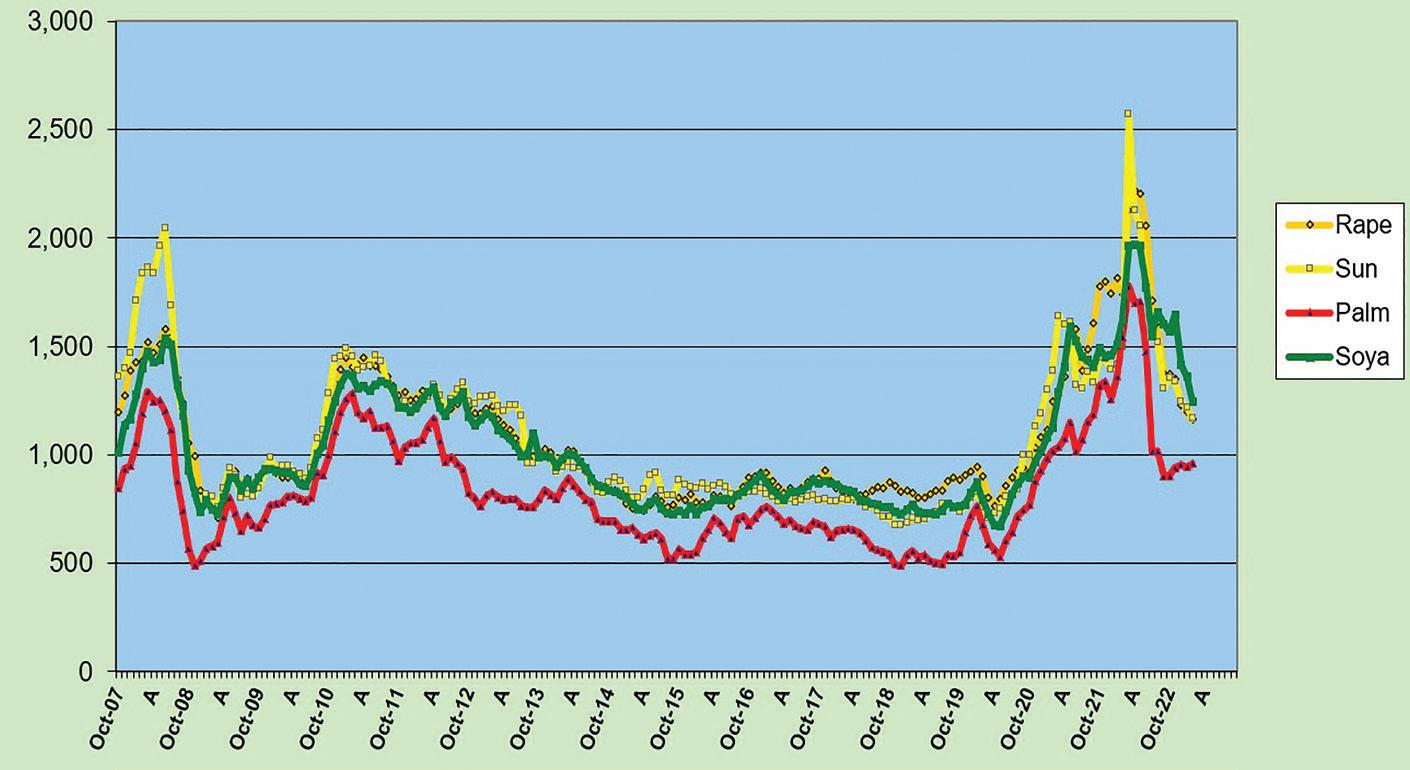






























































































































of higher bio-diesel use, with the USDA estimating a further increase after rising from 4.05M tonnes in 2020/21 to about 4.7M tonnes in 2021/22 and 5.26M tonnes for the current season.
The USDA expects world soyabean oil output to increase by 1.9M tonnes or 3.2%, contributing 20% to the global rise in total vegetable oil supply.
Coming out of a much better than expected crop performance in the 2022/23 season, rapeseed – like sunflower oil – still faces supply risks from the Black Sea conflict’s impact on Ukraine’s sowing, harvest, crush and marketing of oilseeds.
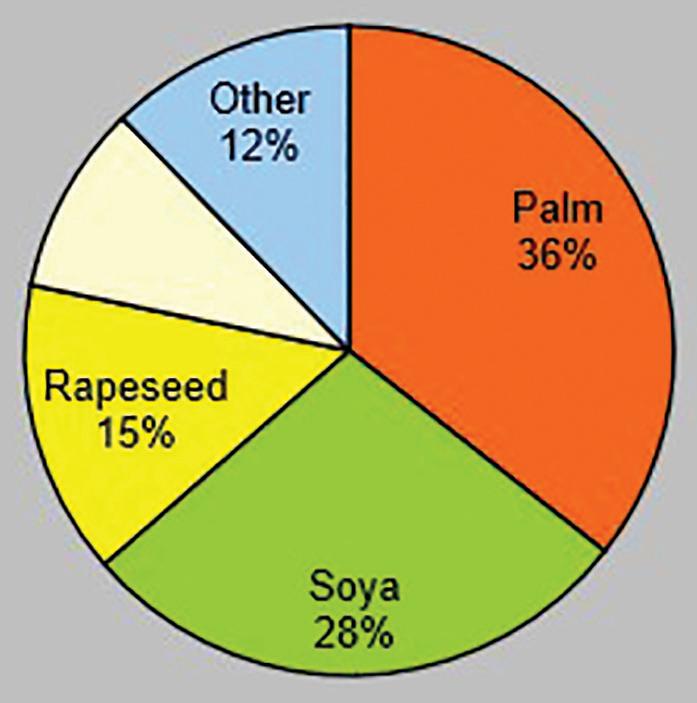
Ukraine’s 2022 rapeseed crop was its second best ever at an estimated 3.3M tonnes. Russian output also jumped to 3.9M tonnes.
The EU 2023 winter-sown crop so far seems in fine shape under generally favourable weather conditions, according to the French analyst Strategie Grains which estimates the bloc’s potential at around 19.6M tonnes. However, traders are keeping an eye on drier conditions in recent months for France and parts of Germany and the UK.
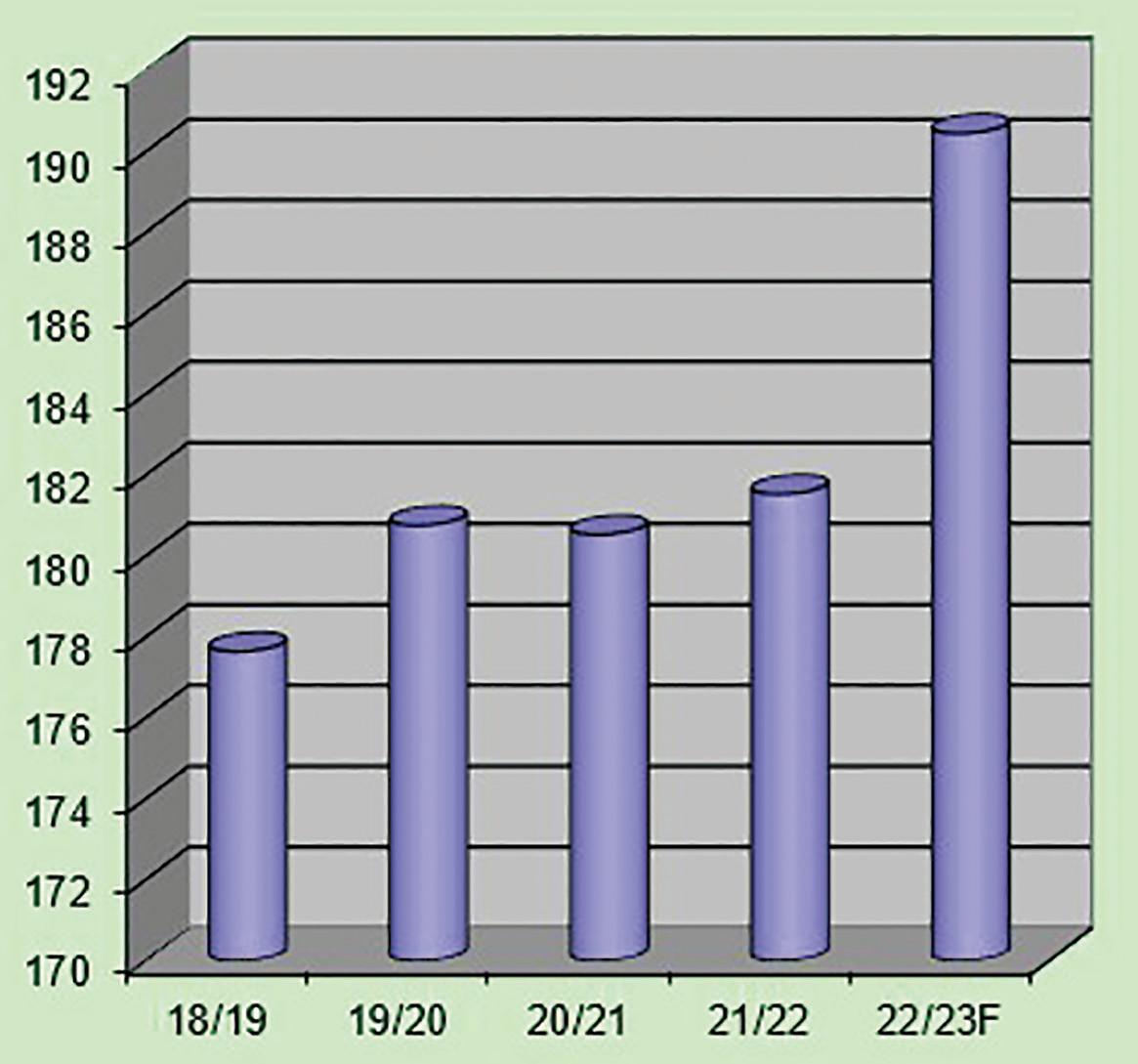
Canada’s steep 2022 crop rebound continues to restrain prices across the canola market. Its 19M tonnes harvest (+5.25M tonnes) left end of 2022 stocks of 11.36M tonnes, 29% higher than the previous year’s. This has also allowed domestic crush to recover by 9.6% to 5.2M tonnes and exports to rise 27.5% to 4.3M tonnes for the season so far.
Canada’s crush margins have also remained very strong, with processors running close to full capacity.
Comfortable supplies will be welcomed by those companies expanding capacity.
Although Ceres has reportedly suspended its plans for now, Cargill, Federated Coop AGT, Richardson and Viterra are all going ahead with constructions that should ultimately boost crush by at least 6M tonnes/year.
Based on forecasts of slightly higher usage in 2023/24, Canada’s carryover stocks could stay much lower than normal – some say around 850,000 tonnes compared with the five-year average of 2.26M tonnes. That could keep the season’s average price higher than the five-year mean of C$739 (US$536).
Fortunately for consumers, Australia is forecast to produce as much as 8.3M tonnes this season, compared with 6.8M tonnes last season and just 4.8M tonnes in 2020/21. After some weather challenges in the past year, this continued growth is testament to investments made in disease management and farm practice in recent years, analysts say. Although government forecaster Abares is pencilling in a smaller crop for 2023/24, it expects exports to stay strong at around 7M tonnes against the average of only 2.15M tonnes over the five years prior to 2022/23.
In contrast, observers have been
trimming back expectations for growth in India’s rapeseed crop. After farmers boosted sowings by some 9%, this was initially expected to approach a new record, perhaps as large as 12M tonnes. However, some observers now think frosts and heatwaves may prevent much growth from last year’s level of 11M tonnes.
Consumption of rapeseed oil is forecast by the USDA to grow by over 8% or about 2.4M tonnes this season, led by China, India, the EU and Canada. However India’s demand could be curbed by its weaker than expected crop and China’s by a slower than expected recovery in its ‘postCOVID’ demand for food oils. Although the EU has been forecast to raise demand by about 350,000 tonnes this season, its longer term consumption remains under threat from the tarnishing image of feed and food crops being used for fuel. Germany’s biofuel industry body recently said its government was considering phasing these out by 2030.
Sunflower oil supplies fared better than expected amid the conflict between the Black Sea region’s leading producers.
Able to draw on huge stocks carried in from the 2021/22 season, Ukraine managed to keep crush at a respectable 10.8M tonnes against the previous season’s 11.35M tonnes, and oil output at 4.39M tonnes (versus 4.64M tonnes the previous season). Using the Black Sea corridor and other routes, it is also expected to ship 2.65M tonnes of sunflowerseed in 2022/23 – 1M tonnes more than in 2021/22 and against just 191,000 tonnes in 2020/21 (see Figure 3 left). That should help raise global production of the oil from last year’s 19.8M tonnes to some 20.6M tonnes.
By early 2023, easing supplies had helped bring the monthly average price of crude sunflower oil down from a record US$2,570/tonne in March 2022 to US$1,168/tonne in February 2023. Overseas buyers were quick to take advantage of this. India – with the added incentive of duty-free imports until March, took a record 473,000 tonnes in January, three times its normal monthly level.
However, while the Black Sea producers have recently been active cheaper sellers, the mid/longer-term outlook for Ukrainian production and exports remains uncertain. This means the global market is expected to start the next season with far lower carryover stocks of sunflowerseed –about 4.4M tonnes compared with the 8M+ tonnes in 2022/23. That could leave 2023/24 supply – and cost – at much greater risk from crop weather or adverse developments in Ukraine. ● John


With different production processes for biodiesel and renewable diesel, what are the pros and cons of one versus the other and the specific advantages of soyabean oil as a feedstock?
 Erica Curles and Keith Cockerline
Erica Curles and Keith Cockerline
Biodiesel starts as an oil. It could be vegetable oil, such as soyabean oil, yellow grease, used cooking oils, or animal fats.
The process of making biodiesel via the fatty acid methyl ester (FAME) method requires feedstock oils/fats, a solvent such as hexane or methanol, and a catalyst as inputs (see Figure 1, following page).
Processing starts by putting the oil into a reactor with a solvent and a catalyst, then a separator to remove glycerol, creating glycerine as a useful by-product. The remaining product, composed of methyl esters, goes through cleaning steps to remove the solvent, neutralisation with acid and drying, resulting in biodiesel.
Biodiesel has its challenges, namely that it thickens in cold temperatures when
petroleum diesel would remain liquid. This makes transporting it with the same infrastructure impossible.
Renewable diesel can start as inedible oils, such as woody biomass and corn oil, or the same feedstocks as biodiesel.
There are several methods to produce renewable diesel including hydrocracking of vegetable oil to produce hydro-treated vegetable oil (HVO), catalytic conversion of sugars, or gasification to produce syngas. However, the only current commercial method is the HVO process, which pumps hydrogen gas into a hightemperature, high-pressure reactor with a filtered feedstock and catalyst, followed by distillation (see Figure 2, following page).
The process requires only a feedstock and hydrogen as inputs. It generates several additional end products, including biopropane (LPG) and naptha, a highly flammable hydrocarbon and industrial solvent.
Processors use different starting materials but similar methods to produce renewable diesel and petroleum-based diesel, resulting in similar products to the point that they have the same American Society for Testing and Materials number (ASTM D975).
Renewable diesel is different from biodiesel in several key ways beyond just how it is made.
It can be directly used in a diesel engine without any need for blending. Although there are seven approved methods to produce renewable diesel, it is currently only commercially produced using the HAME (hydroxyalkanoate methyl esters) route. This process utilises bacteria that produces polyhydroxyalkanoates (PHAs) and generates a fuel that is low in nitrogen and sulphur, resulting in less pollutants emitted when burned compared to petroleum diesel.
Another key difference is that















u renewable diesel is sold as an 80% renewable/20% biodiesel blend in the USA for optimal lubricity performance while biodiesel can be bought at 100%.
Benefits over traditional diesel
Both renewable diesel and biodiesel address demands for lower carbon emissions from government agencies and from consumers.
Source: FarmDoc Daily
According to Sheehan et al (1998), the carbon intensity (CI) score of soyabean oil would allow for a 78% reduction in greenhouse gases if petroleum-based diesel is replaced with biodiesel made from 100% soyabean oil.
An update to this in 2012 by Pradhan et al estimated that 100% soyabean oilbased biodiesel could reduce greenhouse gas emissions by anywhere from 76% to 85%, depending on whether the model accounts for agricultural lime applications and nitrous oxide emissions.

Source: Farmdoc Daily
As of October 2022, the updated Greenhouse Gases, Regulated Emissions, and Energy Use in Transportation (GREET) model developed by Argonne National Laboratory, USA, estimated that the reduction is slightly lower for the average gallon of biodiesel and renewable diesel –around 72%. To calculate this, they used the feedstock mix provided by the US Energy Information Administration (EIA).
Increasing the crush capacity of soyabeans to produce feedstock oil for biodiesel will also result in increased soyabean meal available at economical prices for livestock producers. This could lead to increased meat availability, which would provide more food for people as a result of biodiesel production, not less.

Biodiesel adoption also improves air quality and can have significant positive effects on human health in high-risk areas, such as major metropolitan regions.
Source: Clean Fuels Alliance America, Trinity Consultants
Using standard air dispersion modelling from the EPA, a 2022 study by Clean Fuels Alliance America (CFAA) and Trinity Consultants found that switching to 100% biodiesel from petroleum diesel in 15 cities avoided over US$7bn in health costs and prevented 910 premature deaths per year (see Figure 3, left).

Additionally, on a yearly basis, the switch to biodiesel could reduce the number of sick days taken by more than 141,000 people and prevent or reduce the severity of 456,000 asthma cases.
Looking long term, they estimated that the improvement in air quality would lead to 9,500 fewer cancer cases over 70 years.
Biofuels can further contribute to reducing carbon emissions by using agricultural waste, such as biomass from
specific cover crops like pennycress, to create renewable diesel.
Biodiesel also possesses the ability to clean and lubricate engines, a rare example of a product that is both more sustainable and better for the machine.
Certain countries may focus on biodiesel over renewable diesel, or vice versa, based on the availability of feedstocks.
Biodiesel is typically made from vegetable oils, animal fats or waste cooking oil, which are readily available in certain regions. For example, countries with a large agricultural sector or high consumption of cooking oils may have an abundance of these feedstocks, making biodiesel a logical choice.
In contrast, renewable diesel can also be made from non-food feedstocks, such as waste oils or forestry residue. The availability of these feedstocks may be more limited in some regions.
Government policies and incentives provide another driving force in production choices. Some countries may provide greater financial incentives or regulatory support for the production and use of biodiesel, while others may favour renewable diesel.
In the USA, for example, the Renewable Fuel Standard (RFS) programme requires a certain volume of renewable fuels, including both biodiesel and renewable diesel, to be blended into transportation fuels. However, the RFS programme provides different incentives for biodiesel and renewable diesel, which could impact production volumes. Specifically, according to the US Department of Energy, biodiesel needs to reduce greenhouse gas emissions by 50% over its life cycle, while renewable diesel is required to reduce them by 60% to meet RFS thresholds.
Additionally, the production process and technology used for each fuel differs. The choice of technology may depend on factors such as the availability of infrastructure and the cost of production.
When considering the quality of biodiesel, two abbreviations often come up –ASTM (American Society for Testing and Materials) and BQ9000.
ASTM standards are internationally recognised metrics used to establish the quality of various fuels and materials, including biodiesel. First released in 2001, the ASTM D6751 specification outlines the requirements for biodiesel that is intended for use in diesel engines. This specification includes parameters
for properties such as purity, flash point, viscosity, cloud point, acidity and others.
BQ9000 is a voluntary quality assurance programme for the biodiesel industry. The CFAA, previously known as the National Biodiesel Board, developed it in conjunction with the National Institute of Standards and Technology. BQ9000 incorporates a set of ASTM standards, but also includes additional requirements such as storage, handling and sampling practices. BQ9000 also entails an on-site audit of a biodiesel producer's quality management system.
In summary, ASTM D6751 defines the

quality parameters for biodiesel, while BQ9000 is a comprehensive quality management programme that includes ASTM D6751, as well as additional specifications for quality control.
This means that BQ9000 is not a type of diesel or even a promise of quality, but rather a guarantee that a facility has sufficient quality control in place to prevent any of its diesel from not meeting ASTM standards. ● Erica Curles is a science communicator and Keith Cockerline is director of industrial uses at association management company Smithbucklin, USA

Castor oil is used in a wide variety of industrial applications but although India is the world's leading producer and exporter of the oil, it is failing to capitalise on this position by producing value-added derivatives
Guttarla NagarajIndia is the world's largest producer and exporter of castor oil, and castor is the most important non-edible oilseed crop in the country.
The castor seed is drought tolerant and and is grown in arid and semi-arid regions where annual rainfall can be 50-70cm.
Under rain-fed conditions, the yield is low at around 1 tonne/ha while under irrigated conditions, it can reach up to 3 tonnes/ha or more.
Castor is cultivated in 30 countries on a commercial scale, with Brazil, China,
Ethiopia, India, the Philippines, Russia and Thailand accounting for nearly 88% of global production.
However, India alone accounts for 65% of worldwide castor oil production and over 87% of global exports.
Castor is grown over an area of about 1M ha in India with a production of around 1.7-2M tonnes. The major castor producing states in India are Gujarat, Rajasthan, Andhra Pradesh, Telangana and Odisha.
India exports castor oil to over 134 countries, with exports in 2020/21 valued at US$622.64M.
China, France, the Netherlands, South Korea and the USA account for more than 78% of total castor oil exports from India, taking in US$487.32M worth of castor oil in 2021/21.
China is the largest market for Indian castor oil, importing US$279.14M worth of product in 2020/21. This was followed by the Netherlands (US$71.34M), France (US$57.6M), USA (US$55.87M) and South Korea (US$23.37M) .
Castor oil was one of India's top
10 items exported to China for two consecutive years in 2012 and 2013, worth around US$320M, which accounts for around 35% of India’s total castor oil exports.
Increasing applications in China and Brazil are factors behind India's growing exports of castor oil and derivatives, which are currently estimated at around US$800M, with China, Europe, Japan and Thailand among its top destinations.

Growing international demand has fuelled castor oil exports but the National Multi-Commodity Exchange of India (NCME) says that India is not a price setter in the global castor oil market due to its poor infrastructure and lack of value addition.
It is estimated that India produces around 800,000 tonnes of castor oil and ships over 60% of total oil production to other countries.
At the same time, the NCME says that India has to import castor oil-formulated products and derivatives at a much higher price than the oil due to a lack of manufacturing facilities for value-added products. If facilities to produce castor oil derivatives are set up, this could help India















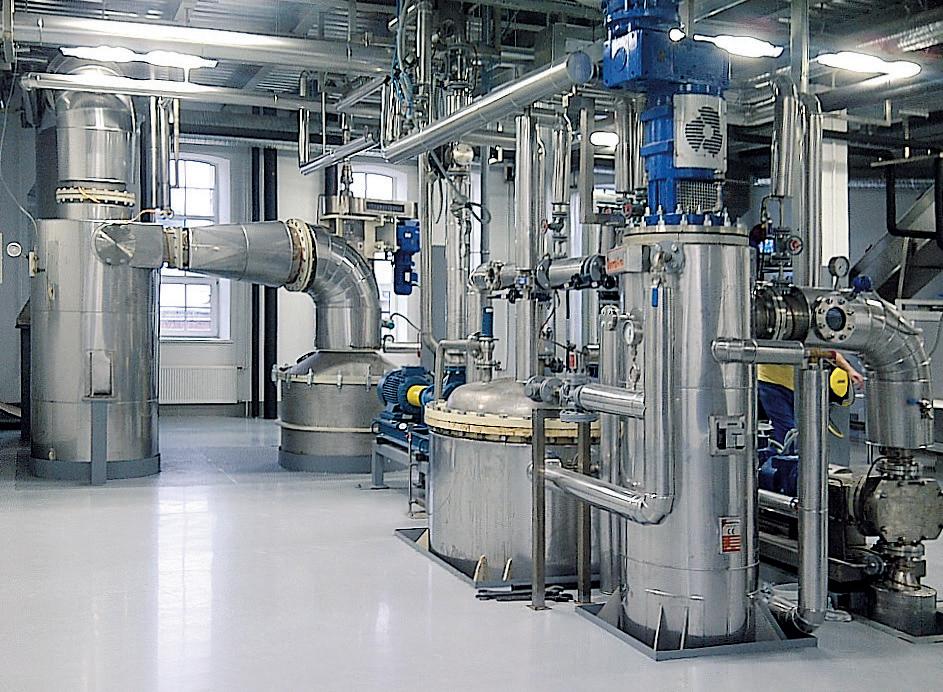


















control prices in the international market, fetch better returns for farmers and reduce its dependency on imports.
Castor oil is obtained by pressing the whole or decorticated seeds of castor, which has an oil content ranging from 45-55%.
The oil is obtained by crushing the seeds in expellers, hydraulic presses, rotary mills, screw presses or wooden oil presses (known as ghanies) frequently used in villages.
In households, the whole seed is boiled in water and the floating oil is separated, filtered and heated to remove moisture.
This domestic method yields around 30% of oil but increases to 35% via ghanies, 39% in rotary and screw presses, and 40% in hydraulic presses.
Castor oil is the only commercial source of ricinoleic acid (a 12-hydroxy-oleic acid) and has long been a valuable ingredient in industrial and medicinal markets due to its unique chemical properties.
From being used as a purgative in India in the past, to its use as an ingredient to improve petroleum-based motor oils in the early 1900s, castor oil today is utilised in applications such as the manufacture of lubricants, nylon, brake fluids, paints, resins, plastics, telecoms equipment, electronics and cosmetics. It is also used as a biofuel in countries such as Brazil.
There is also a growing market for value-added castor oil products such as hydrogenated castor oil, dehydrated castor oil, fatty alcohols and aldehydes, gamma decalactone (aldehyde C-14), ethyl methyl phenyl glycidate (aldehyde C-16).
Coatings: Castor oil is used as a bio-based polyol in the polyurethane industry. The average functionality (number of hydroxyl groups per triglyceride molecule) of castor oil is 2.7. Hence, it is widely used as a rigid polyol and in coatings.
One particular use is in a polyurethane concrete where a castor oil emulsion is reacted with an isocyanate (usually polymeric methylene diphenyl diisocyanate) and a cement and construction aggregate. This is applied as a slurry, which is self-levelling. This base is usually further coated with other systems to build a resilient floor.
Drying oil: While castor oil is not a drying oil like linseed or tung – which harden to a tough, solid film on exposure to air –dehydration yields linoleic acids, which do have drying properties.
In this process, the OH group on the ricinoleic acid – along with a hydrogen from the next carbon atom – are removed to result in a double bond which then has oxidative cross-linking properties, yielding the drying oil.
Oleochemicals: Castor oil can react with other materials to produce chemical compounds that have numerous applications.
Transesterification followed by steam cracking yields undecylenic acid, a precursor to specialised polymer nylon 11, and heptanal, a component in fragrances. The breakdown of castor oil in a strong base gives 2-octanol, both a fragrance component and a specialised solvent. Production of sebacic acid (SBA) is also a major commercial outlet for castor oil. The reaction involves caustic fusion to yield SBA and capryl alcohol as a by-product.
Hydrogenation of castor oil saturates the alkenes, giving a waxy lubricant. Castor oil may also be epoxidised by reacting the OH groups with epichlorohydrin to make the triglycidyl ether of castor oil, which is useful in epoxy technology. This is available commercially as Heloxy 505.
Hydrogenation and saponification of castor oil also yields 12-hydroxystearic acid, which is then reacted with lithium hydroxide or lithium carbonate to give a high-performance lubricant grease. Since it has a relatively high dielectric constant (4.7), highly refined and dried castor oil is sometimes used as a dielectric fluid within high-performance, high-voltage capacitors.
Lubricants: Vegetable oils can be used as lubricants due to their lubricity and biodegradability but are unattractive
alternatives to petroleum-derived lubricants because of their poor oxidative stability.
However, castor oil offers better performance as a lubricant due to the presence of a hydroxy fatty acid (ricinoleic acid), and is used to lubricate jet aircrafts, diesel and race car engines.
Castor oil has better low-temperature viscosity properties and high-temperature lubrication than most vegetable oils. The viscosity of castor oil at 10°C is 2,420 centipoise but it tends to form gums in a short time, so its usefulness is limited to engines that are regularly rebuilt, such as racing engines. Castor oil has also been suggested as a lubricant for bicycle pumps because it does not degrade natural rubber seals.
Castor oil was the preferred lubricant for rotary engines and was used almost universally in rotary-engined aircraft. The methanol-fueled, two-cycle, glowplug engines used for aero-modelling, since their adoption by model airplane hobbyists in the 1940s have used varying percentages of castor oil as a lubricant. It is highly resistant to degradation when the engine has its fuel-air mixture optimised for maximum engine speed.
Turkey red oil: Also called sulphonated (or sulphated) castor oil, turkey red oil is made by adding sulphuric acid to castor oil. It was the first synthetic detergent after ordinary soap and is used in formulating lubricants, softeners and dyeing assistants.

Medicinal and cosmetic uses: Castor oil has been used as a medicinal oil and purgative, with claims that it has antiinflammatory and anti-bacterial properties.
The oil and its derivatives are useful in skin, health and beauty care products such as soaps, massage oils, creams, moisturisers and hair care products to enhance hair conditioning and for its supposed anti-dandruff properties.
Small amounts of castor oil are frequently used in cold-process soap to increase lathering in the finished bar.
As the world's largest producer and exporter of castor oil, India should shift to producing and trading value-added castor oil derivatives.
Manufacturing facilities need to be created with public and policy support to boost export earnings while, at the same time, giving farmers better returns for producing castor seed. ● Guttarla Nagaraj is the former principal scientist and head of crop production at the ICAR-Indian Institute of Oilseeds Research
'India alone accounts for 65% of worldwide castor oil production and over 87% of global exports'
Food security concerns have driven China’s Ministry of Agriculture and Rural Affairs to push Chinese soyabean output in the past two years as tension grows with its main western trading partners and the country deals with the inflationary impact of the invasion of Ukraine.
The ministry has run a “frenetic campaign” to boost soyabean output in 2022, according to agricultural analyst Darin Friedrichs, co-founder and market research director at Shanghai-based Sitonia Consulting, an agri-focused research consultancy.
The result has been national soyabean crop output surging 23.7% in volume, according to government statistics. Yet even though generous subsidies boosted production to 20M tonnes for the first time, the volume is well short of the 91M tonnes China imported in the 2022 calendar year.
China’s total output of oilseed crops in 2022 was 36.53M tonnes, an increase of 1.1% over the previous year:
“Due to increased supply and reduced consumption, the self-sufficiency rate of edible vegetable oil increased by 1.6 percentage points,” noted a ministry statement, albeit without elaborating on what the current self-sufficiency rate is.
According to ministry data, China – which accounts for 20% of global

With the inflationary impact of the Russia-Ukraine war and growing tensions with western trading partners, China has been pushing to boost soyabean output and increase food security
Mark Godfreyconsumption of edible oils and 13% of production – is dependent on imports for 31% of total demand of cooking oils. China imports 80% of its sunflower and 100% of its palm oil needs. It also imports 5% of its peanut oil requirements.
Soyabean supply dictates the margins and supply of soyabean oil. As a result, a slump in pig prices in recent months –China's meat of choice – has weakened demand for soya use as feed, which “by extension hurts soya oil production", Friedrichs explains.
There is another complication: the domestic crop, largely grown in north China, is proving high in oil but low in protein, yet is much more expensive than imports – limiting its attraction for local crushers, according to a Chinese Academy of Agricultural Sciences soyabean analyst quoted in the Xinjing Bao (Beijing News) newspaper in January.
Russia’s invasion of Ukraine was also “very disruptive” for China’s oilseeds procurement, according to Friedrichs, who
said before Moscow attacked, Ukraine had been a key supplier of corn and oilseeds. While Chinese buyers turned to Brazil for corn, “there is not an easy replacement for things like sunflower meal and sunflower oil, which were big imports from Ukraine”.
China has already been working to diversify its import sources in parts of the former USSR, specifically northern Kazakhstan, where the Aiju Grain and Oil Industry Group has partnered with local firm Tayinsha-May to grow and refine rapeseed oil at a new US$19M plant. The project is “demonstrative of the China strategy to alleviate dependence on ocean imports by connecting inland provinces directly with the Eurasian source,” said Tristan Kenderdine, research director at Future Risk, a research consultancy focused on China and the Eurasia region.
The project has diversified farm production from wheat and sunflower oil, Kenderdine says.
A similar rapeseed project is a US$70M plant planned in Akmola, near the capital Astana, being built by Gansu Tianyuan Yangguang Agriculture Development Co Ltd and local Kazakh partner Sunshine Agro LLP.
Kenderdine sees Chinese oilseed projects in Kazakhstan as “integral to national strategy”.

“The hard reality for China is that it cannot rely on self-sufficiency to feed itself. It’ll be dependent on international partners ... China’s approach to food security is very much based on a series of interlocking bilateral agreements with sovereign states,” says Kenderdine.
“Using the international markets system, China was conscious of being over dependent on Canadian imports of rapeseed oil ... thus the investment in Kazakhstan,” he adds.
China is likely to focus on more hedges to prevent reliance on any one source, predicts Kenderdine.
He sees a new emphasis on sourcing food from Africa. However, at the same time, underwhelming investment in Central Asia under the Belt and Road Initiative is a weakness of a strategy relying on these neighbouring countries.
On the consumer side, worsening economic conditions alongside higher import costs have only slightly dampened overall consumption of edible oils which hit 36.5M tonnes last year – a rise of 0.5% on the previous year and well up on the 34.9M tonnes figure recorded in 2019 and 33.4M tonnes in 2013, according to the Chinese Agricultural Supply and Demand Estimates (CASDE) published each month by China’s agriculture and rural affairs ministry.
Meanwhile, China’s growing preoccupation with health is driving buying oil-based food choices.
Anyone who visits an online or offline Chinese food store will note the ubiquity of terms such as EPA (eicosapentaenoic acid) and DHA (docosahexaenoic acid).
Supplements “rich in EPA and DHA fish oil ... are in high demand for direct human consumption and for animal feed,” explains Dr Enrico Bachis, director of market research at the International Fishmeal and Fish Oil Organisation (IFFO), an umbrella body for fish oil and fish meal producers.
“China’s demographics are pointing towards potentially larger demand for EPA and DHA and thus fish oil in the coming years. As the middle class grows, there will be more and more demand for healthier food products ... the high number of one-person households will also lead to a
higher number of pet owners. These pets will be treated like a member of the family …,” and hence eat human-grade oil-based supplements.
Another observer of China’s demand for health-boosting oils sees growing demand for niche products such as krill and algae oils. Dimitri Sclabos, managing director of Tharos, a Chile-based and China-focused consultancy advising the krill industry explains: “Competitive EPA- and DHA-rich products like algae are taking the stage, also oils combining fish oil with other components like vitamins, fortified with ginseng for example, and flavoured or combined with antioxidants like lutein.”
Sclabos expects new launches in China of marine oils products promising to “combat eye fatigue, cardiovascular and brain health.” However, he expects COVID-19 pandemic-era demand for health boosters to cool in 2023 as China transitions out of lockdown.
COVID also served as a dampener of demand for other edible oils in 2022 as the country’s catering sector and consumer confidence struggled.
“During the COVID period, lockdowns and uncertainty about the pandemic stimulated in-home cooking as well as stockpiling, boosting consumers’ usage of cooking oils,” says Joy Yin, senior research analyst in food and drink at the Chinese offices of research agency Mintel. She pointed to Mintel’s Chinese consumer monthly tracker data – May 2022 which showed 46% of surveyed consumers claimed they had stocked up on cooking oils and sauces.
This could mean slower sales in the post-pandemic era.
“As in-home cooking declines, retail sales of cooking oils are predicted to grow at a lower rate than [during] the
pandemic period,” Yin explains. The pandemic also undermined consumers’ financial confidence but as cooking oils are considered essential in-home foods, they are not very sensitive to economic cycles," Yin says.
While the inflation rate has been relatively low in China (2.1% year-onyear in January) compared with western economies, it has impacted edible oil sales, according to an analyst at the Chinese offices of market researcher Euromonitor International.
“We observed a higher retail market growth of edible oil in 2022 compared with 2021 … mainly driven by the increase of the unit price caused by inflation,” explains Elisa Lin, a Euromonitor senior analyst. “Categories featuring convenience such as quick recipe kits and ready meals, as well as food service delivery, all benefited during COVID in 2022,” she adds.
Key Chinese consumer edible oils brands are ‘Arawana’ by Yihai Kerry Arawana Holdings Co Ltd; ‘Fortune’ by China National Cereals, Oils & Foodstuffs Import & Export Corporation (COFCO); and ‘Luhua’ by Shandong Luhua Aromatic Peanut Oil Ltd, according to Euromonitor.
As for future drivers of demand, Lin says increased consumer health awareness will remain a key influence on the development of edible oils, leading to a shift towards more premium types, for example from soyabean oil to peanut oil and sunflower oil, and the emergence of niche types such as avocado oil.
Chinese consumers have an increasing awareness of fat intake, explains Lin, “partly due to the government’s national health campaign promoting a reduced fat diet.” She also sees growth for new packaging formats, such as spray edible oils. “This is becoming a trendy packaging
format especially for premium types of oil, such as olive oil and avocado oil.”
Yin, at Mintel, meanwhile agrees that health values are trumping other factors like price and food safety in consumers' buying preferences.
“While consumers do care about food safety and price, they are not the biggest drivers. According to our latest survey results, nutrients like vitamins and oleic acid, as well as functional benefits – for example it’s good for cardiovascular health – are two key factors for consumers buying edible oils.” Another of the three top demand factors cited by consumers is whether the oil is derived from non-GMO (genetically modified) oilseeds, says Lin.
As for differences in the buying choices of high- and lowerincome Chinese consumers, Lin notes that “high earners are more interested in niche oils like wheat germ and coconut oil and more likely to seek nutrient supplements while consuming cooking oils. They are also more willing to pay a higher price for products with organic claims and high levels of unsaturated fat.”
Weakening demand in southeast Asia should mean lower prices in 2023 for China’s imports of palm oil, which comprise 40% of China’s total edible oils imports, according to the China General Administration of Customs and the China Agriculture and Rural Affairs Ministry.
Certainly, 2022 was a tricky year for imports. COVID-related restrictions slowed port operations, which scared off some importers from making orders with foreign suppliers. In addition, Indonesia curbed palm oil exports, while the Ukraine war squeezed supply of sunflowerseed and oil and and pushed up their prices. Domestic supply in 2022 was also complicated by extreme weather including a drought that hit central and southern China particularly badly.
It is not yet clear how an uncertain economic outlook will impact Chinese demand for edible oils. A series of indexes kept by CKGSB, China’s leading independent business school, shows a weak employment situation. In December 2022, the unemployment rate of young people aged between 16 and 24 years in urban areas of China stood at 16.7%, according to the National Bureau of Statistics. The labour cost index was down to its lowest point in a decade, at 67.5 compared to 100 in September 2011, says CKGSB.
Not since the 1970s has the Chinese economy grown so slowly. China is projected to return a total GDP growth of 3% for 2022, well below the 5% targeted by the Xi administration. The World Bank has projected growth of 2.7% in 2022 and 4.3% in 2023.
China’s total exports dropped by 8.7% and 9.9% year-on-year in November and December 2022, largely due to a mix of inflationary pressure in key markets but also because of political tensions, notably the protests that sparked an end to China’s zero-COVID policy, according to the China General Administration of Customs.
The country's ability to drive growth with credit-fuelled infrastructure projects also appears to have waned due to the increasingly feeble pay-off in growth terms from infrastructure, while the country’s debt-fuelled real estate sector has cooled due to a combination of debt and weak consumer demand for housing.
In the longer term, the ageing of China’s society means there is unlikely to be the conditions for growth in its oils and fats consumption during the 2030s.
China’s avenue to a consumption-driven growth rebound also looks complicated by the paucity of welfare coverage, meaning workers will not have the savings glut of their western counterparts and will face significant COVID care bills given the threadbare nature of the country’s healthcare system.
● Mark Godfrey is a journalist for International News Services Ltd, UK
Clean and efficient vacuum systems for refining and deodorising
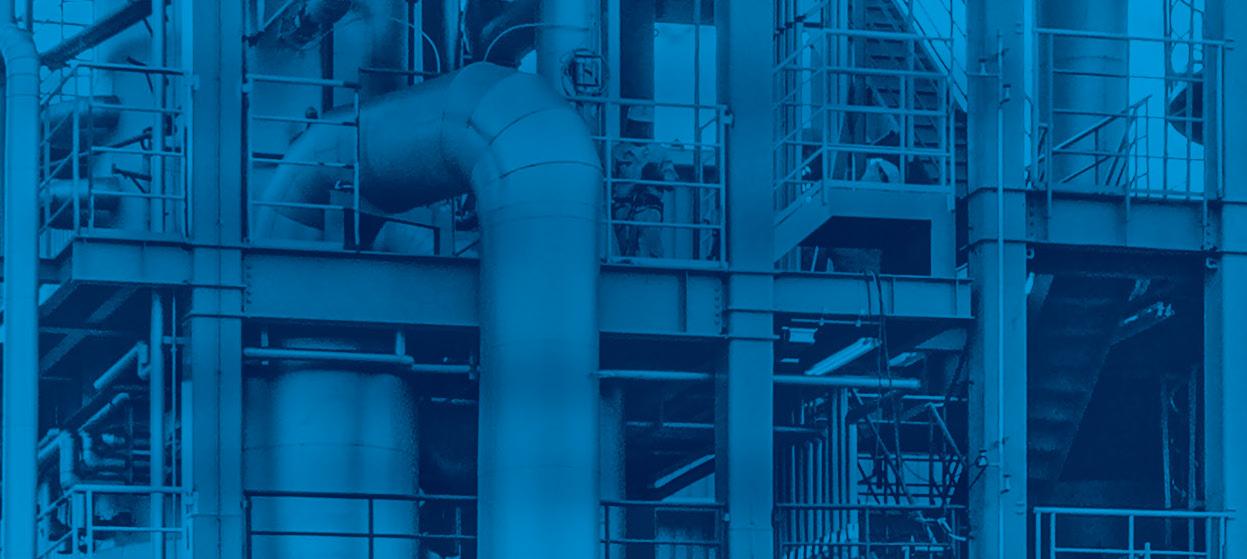
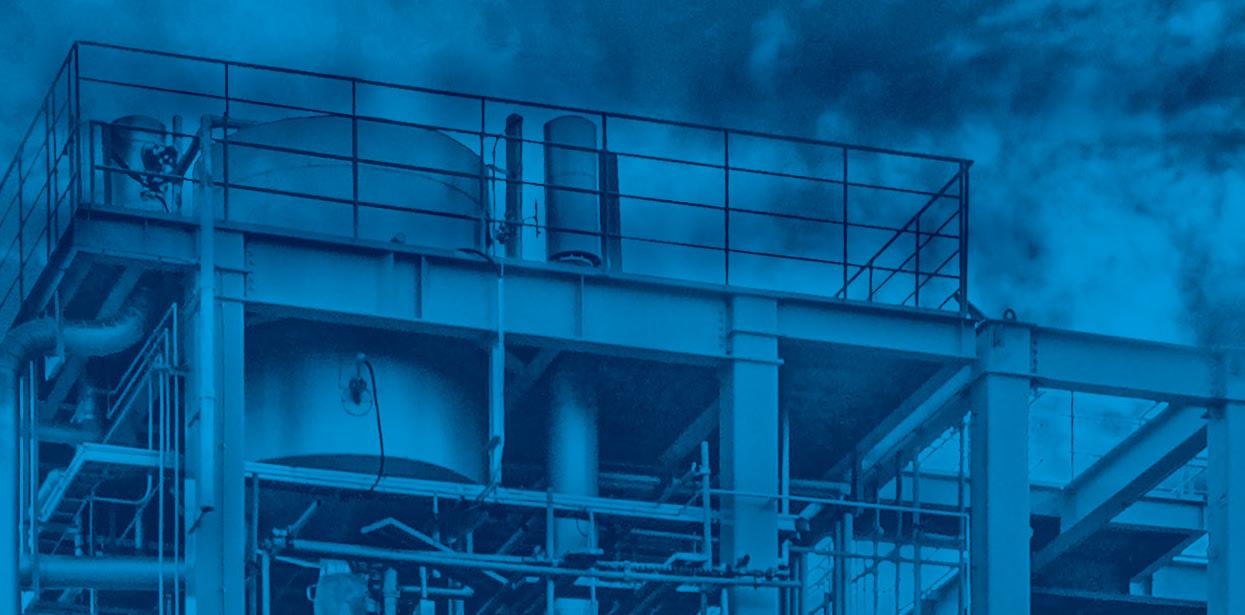

• Ice Condensation
• Alkaline Closed Loop both systems with clean cooling tower
International reports on some of the latest projects, technology and process news and developments around the world
USA: US renewable diesel producer Diamond Green Diesel (DGD) has been given the go-ahead for a sustainable aviation fuel (SAF) project at its Port Arthur plant in Texas.
Due to become operational in 2025, the US$315M project at the Port Arthur plant would have the capability to upgrade approximately 50% of its current 1.7bn litres (470M gallons)/ year production capacity to SAF, Darling Ingredients said on 31 January.
DGD is a 50/50 joint venture between global renderer Darling Ingredients and Valero Energy Corporation, a petroleum refiner and renewable fuels producer.
USA: Finnish renewable fuels producer Neste said on 13 January that it had completed its acquisition of Crimson Renewable Energy’s used cooking oil (UCO) collection and aggregation business in the USA, which included shares in SeQuential Environmental Services and Pure, as well as a UCO processing plant in Salem, Oregon.

Through the transaction, Neste said it had acquired a leading UCO collection and recycling business on the US West Coast, covering the collection, logistics and storage of UCO in California, Oregon and Washington.
Leading Canadian petroleum refiner Imperial announced on 26 January that it is set to go ahead with a US$560M (CA$720M) investment in a renewable diesel complex at its Strathcona refinery near Edmonton.
The facility would produce more than 1bn litres/year of renewable diesel (hydrotreated vegetable oil – HVO) once operational.
“We are making investments to reduce greenhouse gas emissions from our own operations and to help customers reduce their emissions,” said Imperial chairman and CEO Brad Corson.
First announced in August 2021, a significant portion of the renewable diesel from the project would be supplied to
British Columbia province.
The HVO facility would use low-carbon hydrogen produced with carbon capture and storage technology.
Imperial had also entered into an agreement with Air Products for low-carbon
hydrogen supply and was developing deals with other third parties for bio-feedstock supply, it said.
Initial construction was underway, with renewable diesel production expected to start in 2025.
Global agribusiness giant Bunge is planning to invest around US$550M in a new soyabean protein concentrate (SPC) plant in Morristown, Indiana, USA.
The SPC and textured soyabean protein concentrate (TSPC) facility would meet rising customer demand for key ingredients in the production of plant-based foods, processed meat, pet food and feed products, Bunge said on 15
December. Commissioning of the facility, which would be integrated with Bunge’s soyabean processing plant in Indiana, was in mid-2025.
Once operational, the new plant was expected to lead to the processing of an additional 4.5M bushels/year of soyabeans and add scale, efficiencies and non-GMO capability to the company’s existing US-based conventional SPC and TSPC operation in Bellevue, Ohio, Bunge said.
Hong Kong start-up EcoCeres has announced plans to build a second plant to turn waste oil and water into low-carbon fuel for aircraft and cars, the South China Morning Post (SCMP) reported on 2 February.
Expected to take about two years to complete, the proposed plant in Johor Bahru, Malaysia, would produce around 350,000 tonnes/year of biofuels from used cooking oil (UCO) and palm oil mill wastewater, the report said.
“Now that our first plant in China is performing well, we are designing our second plant in Malay-
sia, which will soon proceed to the construction phase,” EcoCeres co-founder and CEO Philip Siu Kam-shing told the SCMP EcoCeres, a business unit of local energy supplier Hong Kong and China Gas (Towngas), operates a waste oil processing plant in Zhangjiagang, Jiangsu province, China, which produces 100,000 tonnes/year of sustainable aviation fuel and 200,000 tonnes/year of renewable diesel. The plant, which started commercial operation in early 2021, delivered all of its current production to the European market, the SCMP wrote.
products, pharmaceutical products and clean energy.
Maximize the life of your frying oil.
Canadian algae technology company Solarvest BioEnergy has been granted a patent for algal-based omega-3 production in Brazil, Newswire reported on 24 January.
The patent covered the production of algal biomass, algal cell cultures, lipid compounds and compositions, including fatty acids, carotenoids and fat soluble vitamins.
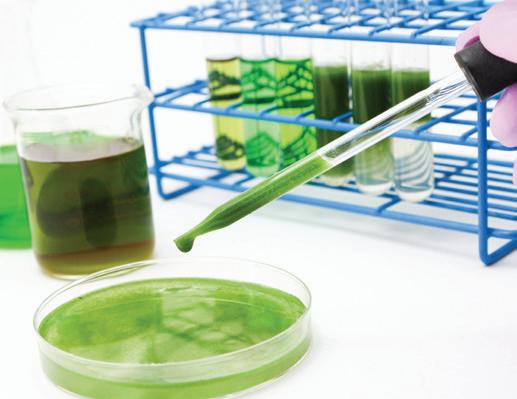
Solarvest said it had researched and developed microalgae strains for a range of markets, including health
Marketing its omega-3 products through its wholly-owned subsidiary Eversea, the company’s patented omega-3 active ingredient had obtained US Food and Drug Administration (FDA) New Dietary Ingredient (NDI) certification and had been certified organic by the United States Department of Agriculture (USDA) and the European Union (EU), it added.
In addition to the latest patent, the company had been granted organic omega-3 patents in Australia, India and Japan, with patents pending in many other global markets including the EU and the USA, Newswire wrote,
The company is currently extending its portfolio to include cannabinoids, its website said.
Our experts will work with you to optimize your frying operations and oil quality. The addition of DALSORB® oil purifier will extend the life of your frying oil and improve overall product quality. DALSORB® keeps your food wholesome and removes undesirable compounds to keep frying oil clean from:





Optimisation of edible oil processes through key technologies
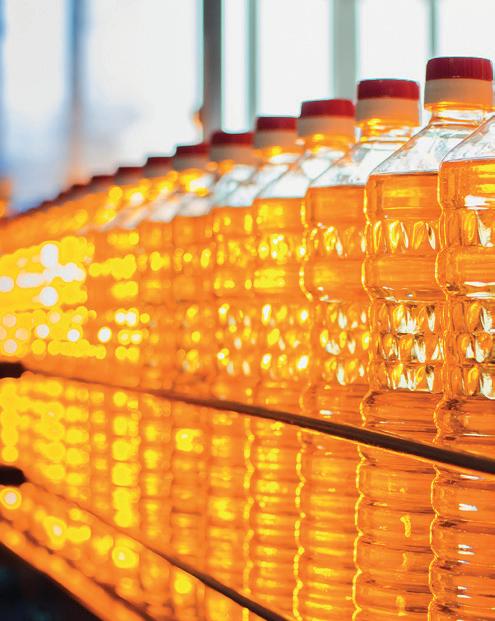
• Straight tube Coriolis mass flow meters feature improved abrasion resistance and lower pressure drop











• Achieve reliable viscous oil flow measurement even with entrained air or solids


• Choice of radar level measurement solutions for dynamic processes or storage tanks

• Range of cost-effective and advanced technology solutions for energy management and optimisation

cmp.krohne.com/edible-oil


Since the election of Luiz Inácio Lula da Silva as Brazil’s president last year, the country’s biofuels industry has been putting pressure on him to make significant reversals to the laissez-faire policies implemented by his right-wing predecessor Jair Bolsonaro, who lost the election last October.
The sector is concerned about a sluggish economy, which the OECD says will grow just 1.2% in 2023 (inflation stands at 5.77% – January figures). But the leftist leader, who has built a broad governing coalition, has delayed any announcements on market intervention until he feels he has secured more cooperation from a biofuel sector which overwhelmingly campaigned for Bolsonaro in October’s elections.
Lula was a staunch advocate of biofuels during his 2003–2010 presidency but his enthusiasm waned towards the end of his terms after the South American nation found massive pre-salt layer oil offshore reserves. His successor, former President Dilma Rousseff (2011–2016), also had a lukewarm relationship with the biofuels industry, with Brazilian agribusiness becoming more dependent on exports to China and less on biofuels.
The ultra-conservative Bolsonaro reconnected with Brazil’s agribusiness over the past four years although he was not a dedicated supporter of the biofuels industry, partly because he valued the support of a key political base – lorry drivers wanting access to cheaper fossilfuel based diesel. Bolsonaro wanted to keep biofuel mandates low to reduce prices for truckers, mirroring other Latin American government policies, due to rising prices of soyabean oil (a key raw material for the biofuels industry) during a time of heavy exporting of the commodity.
Many rural leaders not only campaigned for Bolsonaro, but also backed the invasion of the country’s Presidential Palace, Congress and Supreme Court buildings in the capital, Brasília, on 8 January. Some still insist they do not accept the election results, despite no evidence of fraud in Lula’s narrow victory.
Lula now has an opportunity to build support among farmers, particularly
soyabean producers, by reversing moves made by Bolsonaro that weakened the biofuels sector.

On 17 March, the country’s national energy policy committee CNPE decided to raise Brazil’s biodiesel mandate from the current 10% level (B10) to 12% (B12) from April with a progressive ramp-up in mandates to reach 15% (B15) by 2026.
The increase in the blending mandate is broadly in line with industry expectations, although the ramp-up schedule is more cautious than the country’s biodiesel sector had advocated for, which previously said that B15 could be reached by March 2024.


“Our industry has a productive capacity that is way, way beyond [its current level],” says Daniel Amaral, executive of economics and institutional relations of the Brazilian Association of Vegetable Oil Industries (ABIOVE), a key representative of the soyabean oil industry.
He says the industry has the capacity “to even do an 18% mix”.
Nonetheless, the blending mandate

increase has been welcomed by ABIOVE.
“This initiative brings predictability for the biodiesel sector to intensify its investments and puts Brazil on the pathway to lead global diesel decarbonisation efforts,” the association said in a note immediately after the announcement.
A 15% mandate could have boosted local demand to 9.5bn litres of biofuels in Brazilian petrol stations, considerably higher than the annual 8.1bn litres with B10, according to an industry memorandum signed by business leaders and analysts requesting higher mandates from Lula’s team shortly after he won the elections.
The memorandum added that the 10% mandate in 2021 – reduced from B13 in a bid to control domestic inflation – had caused a fall in demand to 6.3bn litres, making 53% of the industry inactive.
Brazil has 57 biodiesel factories in 15 states. Its full production capacity is 13.3bn litres, according to the country’s national agency of petroleum, natural gas and biofuels ANP (Angêcia Nacional do Petróleo).
Brazil’s new minister of mines and energy Alexandre Silveira also received a plea from the biofuel sector to reverse another Bolsonaro decision: end an open borders policy in the import of biofuel feedstocks, so the country’s industry can better compete with overseas suppliers.
Brazilian business leaders and analysts have argued open markets are unfair as some foreign companies have less stringent production rules and standards than those imposed in Brazil, notably on worker welfare protection.
The document sent to the Lula administration added that encouraging imports of feedstocks now that the COVID-19 pandemic has waned worldwide, and energy demand is rising globally, could “disorganise the entire national productive chain”.
Both topics were part of Lula’s personal conversation with US President Joe Biden during his visit to Washington DC on 10 February. Figures from the Brazilian government’s Energy Research Office (EPE — Empresa de Pesquisa Energética) show that amid declining domestic biofuel production in 2021, Brazil imported 423,300m³ of ethanol, 62.3% of which came from US companies.
ABIOVE’S Amaral has been taking part in conversations with Lula’s team, telling OFI that sustainability will be a bigger
part of the discussion under the current administration than its predecessor.
“The soyabean industry has a lot of experience. There’s a broad space for investment if the infrastructure improves, especially roads, with potential for increasing exports.”
Amaral says ABIOVE members believe “in continuous dialogue with the new administration” to work more intensely on biofuels consumption in Brazil, while seeking a boost in exports.
“That’s our goal – to assure we are competitive on those two fronts.”
The new blending announcement will mean higher domestic demand for biodiesel and upstream products, particularly for soyabean oil, which represents about 70% of the feedstock used to produce biodiesel in Brazil, AgriCensus wrote on 17 March.
According to estimates that ABIOVE shared with AgriCensus at the beginning of the year, B12 would lift Brazil’s soyabean oil demand from the biodiesel sector by about 800,000 tonnes/year.
Amaral also says the country is “expecting a super harvest of soyabeans of around 153M tonnes this year”.
This means room to boost export sales of soyabean oil.
AgriCensus wrote that Brazil’s 2022/23 soyabean oil output is forecast at 40.4M tonnes and its soyabean oil export programme had been extremely robust since the beginning of the marketing year. Any possible downgrade in domestic consumption due to B12 rather than B15 could be offset by higher export numbers, it added.
As the president following on from Bolsonaro, Lula is under pressure from environmentalists, who were frozen out from policy influence under the previous administration. Bolsonaro’s government was accused of promoting deforestation,
especially in the Amazon basin; taking no action against intentional fires; providing incentives to loggers and miners; and enabling the use of one or more of the 2,182 pesticides approved by him.
Some agri-business operators have benefited indirectly from such actions –one is Brasil BioFuels (BBF), a company of 6,000 workers founded in 2008. BBF is Latin America’s biggest producer of palm oil, expected to become a bigger part of the blend used in diesel.
The government’s relations with this company are multi-faceted – it makes biodiesel, green diesel and sustainable aviation fuel, which fits its environmental policy, as does BBF’s ability to generate renewable electricity for Brazil’s poor northern region, replacing fossil fuels.
But expansion of production will need to avoid destroying rainforest as the new administration is under pressure to implement a zero-deforestation policy.
BBF is optimistic it can square the biofuel/deforestation circle.
“We believe in sustainability that is linked to innovation, using our resources available in Brazil’s north. We are firm in our journey to recover the Amazon with the sustainable growing of palm oil,” Milton Steagall, BBF’s CEO says.
BBF produces more than 200,000 tonnes of palm oil in its facilities, all based in Brazil’s north, with the majority used in biodiesel. Its Amazonbio factory in the city of Ji-Paraná, in the state of Rondônia, can produce 32M litres/year of biodiesel. The company’s new 500M litres/year biofuels unit in Manaus, the capital of Amazonas state, is due to open in 2025.
Palm oil cultivation also releases fewer carbon emissions than soyabean production and generates more rural jobs because its plantation and harvest cannot be mechanised, Steagall says.
Compromise solutions could be found that encourage more sustainable production of Brazilian-grown biofuel feedstocks.
If that happens, Brazil Vice President Geraldo Alckmin, a former governor of São Paulo state and a moderate, may play a key role. Serving within the broad coalition assembled by Lula (who remains a member of the centre-left Workers’ Party), Alckmin is also Brazil’s Minister of Development, Industry and Foreign Trade and has taken part in several negotiations with energy minister Silveira, who is also a moderate. They may succeed in talking to former Bolsonaro supporters. ● Mauro Fernandes, is a journalist for International News Services, UK
‘Lula has an opportunity to build support among farmers by reversing moves made by Bolsonaro that weakened the biofuels sector’
19-20 April 2023
European Algae Summit Lisbon, Portugal
www.wplgroup.com/aci/event/europeanalgae-industry-summit
21-23 April 2023
International Conference on Rice Bran Oil Hyderabad, India
https://seaofindia.com/wp-content/ uploads/2022/12/1st-AnnouncementIARBO-2023.pdf
25-27 April 2023
Argus Biofuels & Feedstocks Asia Conference
Marina Bay Sands Expo and Convention Centre, Singapore
www.argusmedia.com/en/conferencesevents-listing/asia-biofuels
26-28 April 2023
Eurograin Exchange & Forum Bucharest, Romania https://eurograinevents.com/
29-30 April 2023
29th Practical Short Course: Fundamentals & New Techniques in Edible Oil Processing and Applications Denver, Colorado, USA www.smartshortcourses.com/ oilprocess29/index.html
30 April-3 May 2023
AOCS Annual Meeting & Expo 2023 Denver, Colorado, USA
https://annualmeeting.aocs.org
4-5 May 2023
13th ICIS World Surfactants Conference
Hyatt Regency, Jersey City, USA
https://events.icis.com/website/8544/
8-10 May 2023
Globoil International Dubai 2023
Le Meridien Hotel & Convention Centre, Dubai
www.globoilinternational.com
9-11 May 2023
Sustainable Aviation Futures APAC Congress
Location: Marina Bay, Singapore www.safcongressapac.com
For a full events list, visit: www.ofimagazine.com
10-11 May 2023
FENAGRA 2023 – International Feed & Food Agroindustry Fair
Dom Pedro Expo, Campinas, Brazil http://fenagra.com.br
16-17 May 2023
Biofuels International Conference & Expo 2023
Brussels, Belgium
https://biofuels-news.com/conference/
23-25 May 2023
Argus Green Marine Fuels Conference Novel Amsterdam City the Netherlands
www.argusmedia.com/en/conferencesevents-listing/green-marine-fuels/ register
30-31 May 2023
RSPO Inter-American Conference 2023 Hotel Kimpton Epic, Miami, Florida, USA
https://rspo.org/first-rspo-interamerican-conference-2023-spotlightsthe-americas-role-as-sustainable-palmoil-leaders/
1-2 June 2023
Veg Oil Trade 2023 Rotterdam, the Netherlands
www.apk-inform.com/en/conferences/ vegoil-trade-2023/about
5-6 June 2023
4th International Congress on Mineral Oil Contaminants in Food Berlin, Germany
https://veranstaltungen.gdch.de/tms/ frontend/index.cfm?l=11448&sp_id=1
5-7 June 2023
12th CESIO World Surfactant Congress
Rome, Italy
https://cesio-congress.eu/
7-10 June 2023
European Fat Processors and Renderers Association (EFPRA) Congress 2023 Naples, Italy
https://efpra2023naples.eu/
12-14 June
International Conference on Algal Biomass, Biofuels and Bioproducts Waikoloa Beach, Hawaii, USA www.elsevier.com/events/conferences/ international-conference-on-algalbiomass-biofuels-and-bioproducts
12-14 June 2023
4th Biodiesel/Renewable Diesel Summit
CHI Health Center, Omaha
Nebraska, USA
https://few.bbiconferences.com/ Biodiesel.html
12-13 June 2023
IGC Grains Conference
London, UK
www.igc.int/en/conference/ confhome.aspx
14-15 June 2023
Oleofuels 2023
Seville, Spain
www.wplgroup.com/aci/event/oleofuels
17-18 August 2023
Palmex Thailand 2023
Suratthani, Thailand
www.thaipalmoil.com
17-20 September 2023
Euro Fed Lipid Congress & Expo
Poznań, Poland
https://veranstaltungen.gdch.de/tms/ frontend/index.cfm?l=11215&sp_id=2
24-27 September 2023
16th International Rapeseed Congress
Sydney, Australia www.irc2023sydney.com
28-30 September 2023
Globoil India 2023
Westin Mumbai Powai Lake
Mumbai, India
https://globoilindia.com/
11 October-13 October 2023
Argus Biofuels Europe Conference
London, UK (+ Online)
www.argusmedia.com/en/conferencesevents-listing/biofuels
24-27 October 2023
North American Renderers Association Annual Convention
Ritz Carlton, Naples, Florida, USA
https://nara.org/about-us/events
7-9 November 2023
International Palm Oil Congress & Exhibition (PIPOC) 2023
Kuala Lumpur Convention Centre Malaysia http://pipoc.mpob.gov.my/
The Mintec Benchmark Prices (MBP) for soyabean oil FCA Netherland was assessed at €1,085/tonne on 8 March, down by 5.2% month-on-month (m-o-m) and by 37.75% year-on-year (y-o-y). Soyabean oil prices in the EU have declined for the seventh consecutive week this year, on the back of persistently low demand and ample supply of alternative oils (rapeseed and sunflower).
South American weather conditions remain the major sentiment driver in the soyabean and oil market, with the Argentinian crop being of major concern. The USDA’s latest World Agricultural Supply and Demand Estimate released on 8 March pegged the Argentinian crop for this season at 33M tonnes, down by 20% m-o-m and by 25% y-o-y. Market participants speculate that the crop could even be lower at between 25-26M tonnes.
The Mintec Benchmark Prices (MBP) for crude palm oil CIF Rotterdam stood at €929/tonne on 8 March, up by 2.2% m-o-m, but down 47% y-o-y on. The USDA has raised this season’s total palm oil production estimates to 19.2M tonnes. However, if El Niño weather patterns in southeast Asia and labour shortage issues in Malaysia persist, this season’s production may fall short of the estimate. USDA palm oil production estimates for Indonesia this season are unchanged at 45.5M tonnes, an increase of 5% y-o-y, following a decline in production in the previous season. At the Palm & Lauric Oils Price Outlook Conference & Exhibition (POC2023) in March, industry officials stated that in addition to El Niño weather patterns, Indonesia’s biodiesel policy could further strain global supply, posing upside risks to prices later this year, despite current relatively high stock levels in top palm oil importers – India and China. In February, Indonesia raised its biodiesel mandate from 30% to 35%.
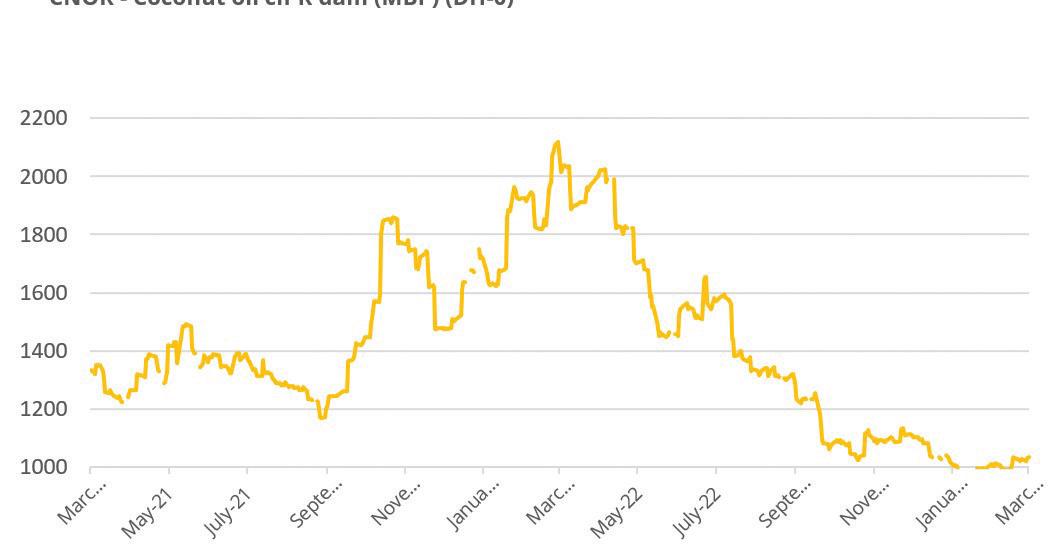
The Mintec Benchmark Prices for crude coconut oil (CNO) CIF Rotterdam was assessed at €1,033/tonne on 8 March, up by 2.7% m-o-m. Coconut oil prices have been driven by increased demand on the back of dwindling supply of alternative palm kernel oil (PKO) in Indonesia. In March, the USDA kept its global coconut oil production unchanged m-o-m at 3.7M tonnes, down by 723,000 tonnes y-o-y. The USDA also maintained its output estimates for top coconut oil producer, the Philippines, at 1.7M tonnes, unchanged m-o-m and y-o-y. However, market sources speculate output could fall lower than the USDA estimates due to declining copra production and consequently, processing. Declining production of CNO and PKO is expected to curb consumption of CNO.
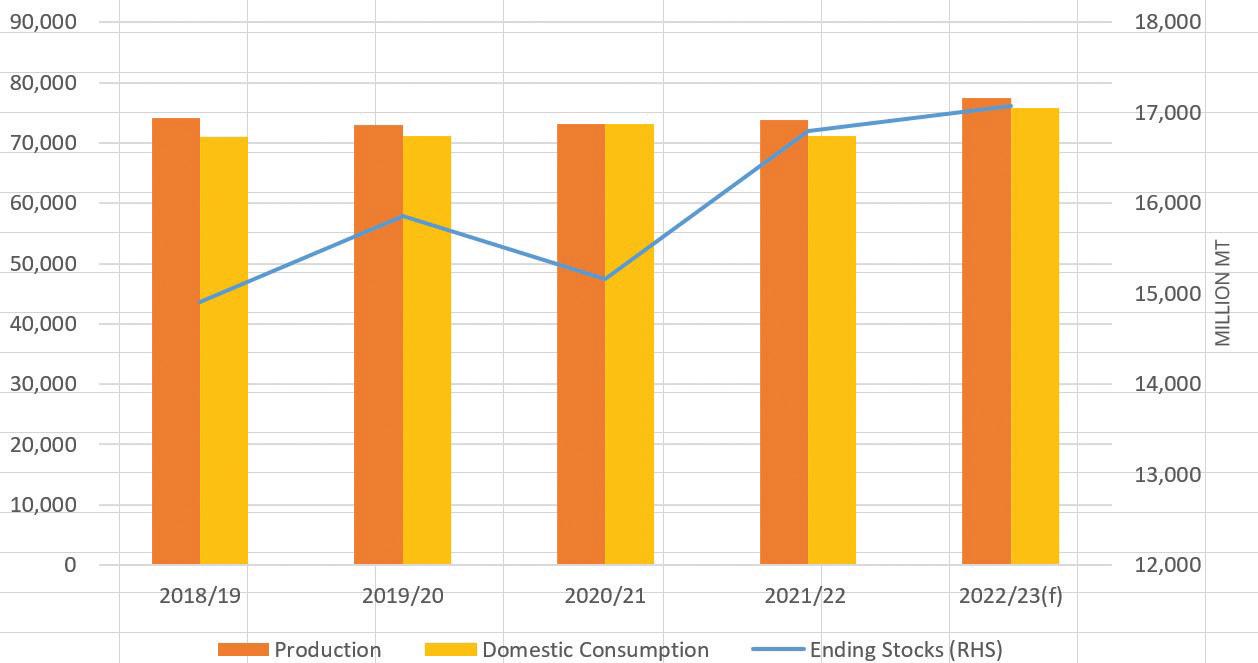
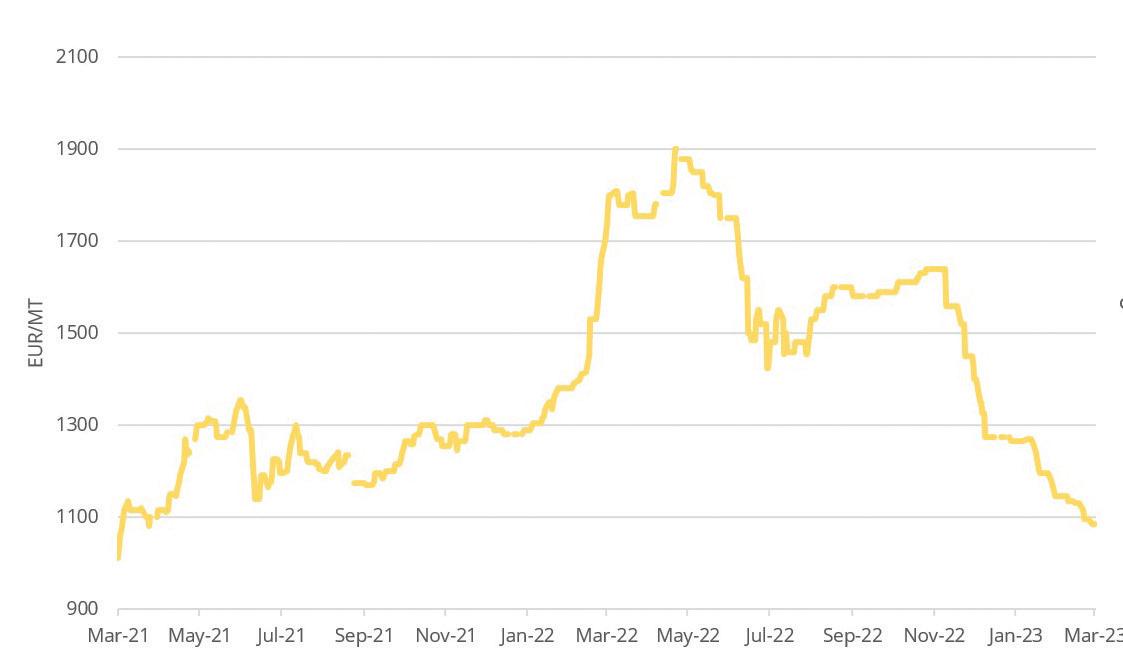
Mintec provides independent insight and data to help companies make informed commercial decisions.
Tel: +44 (0)1628 851313
E-mail: sales@mintecglobal.com
Website: www.mintecglobal.com












